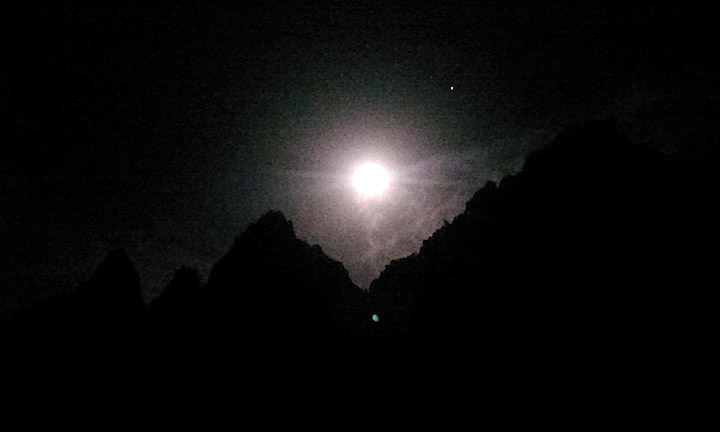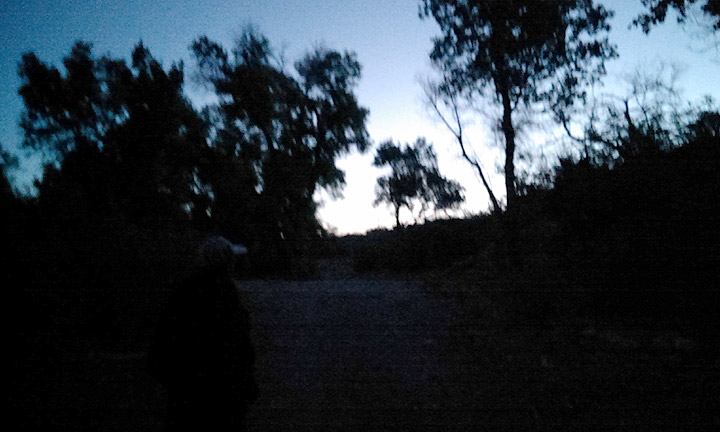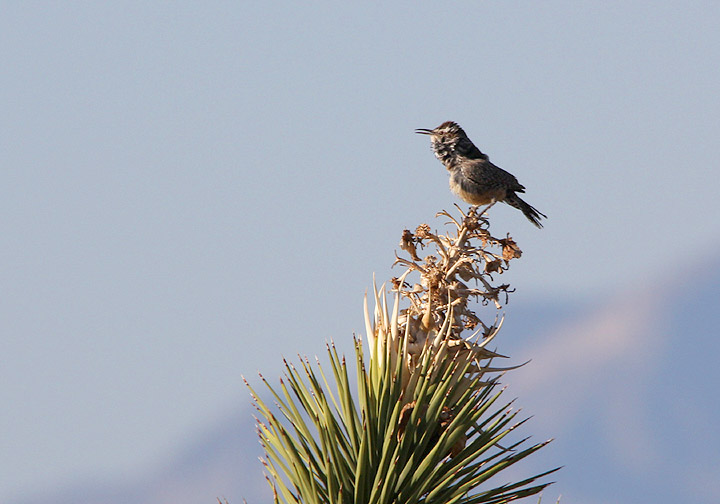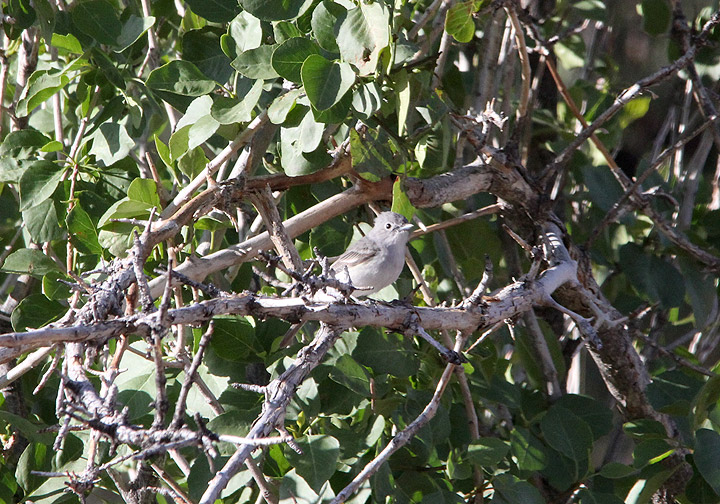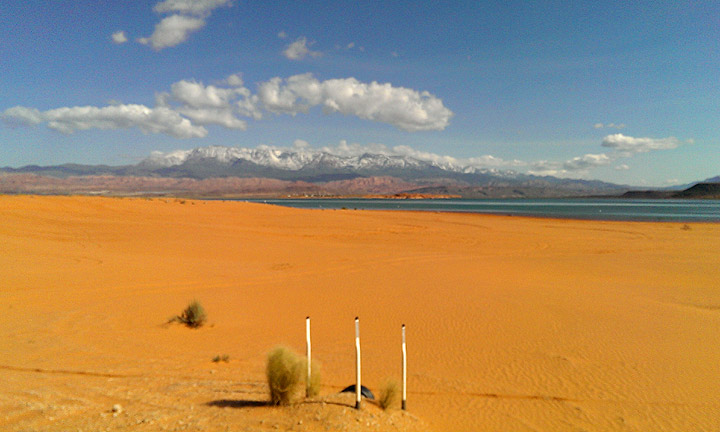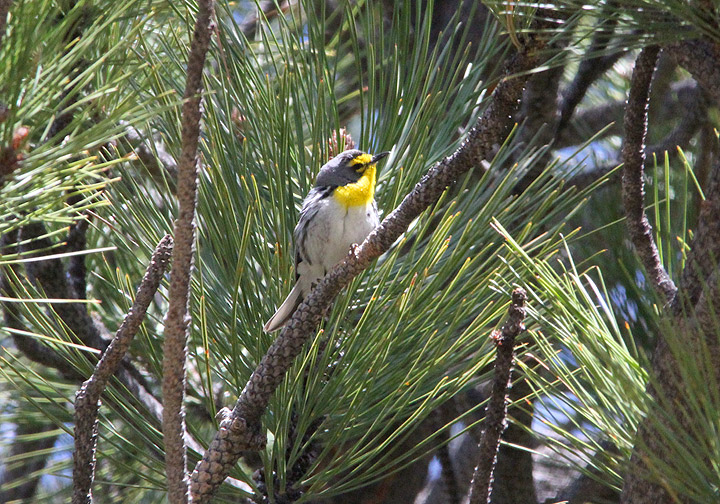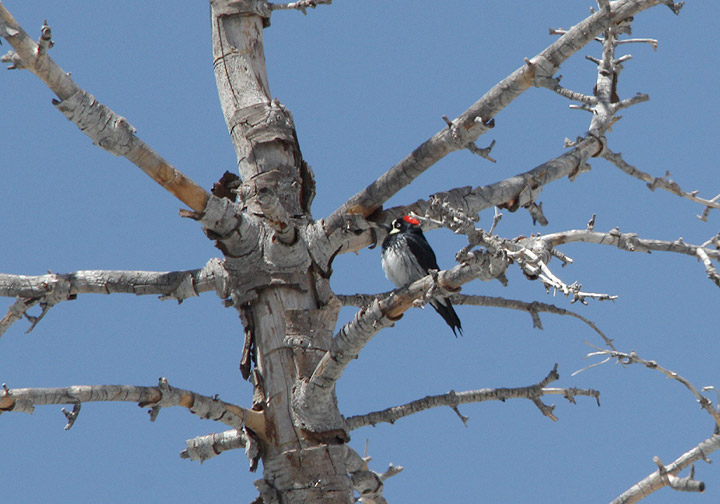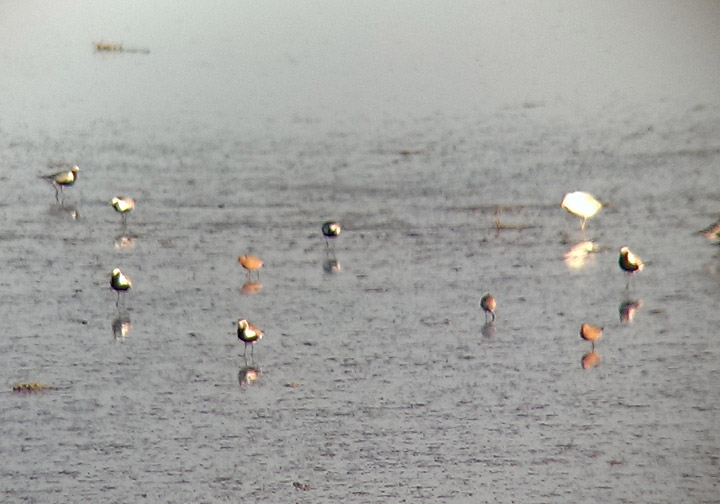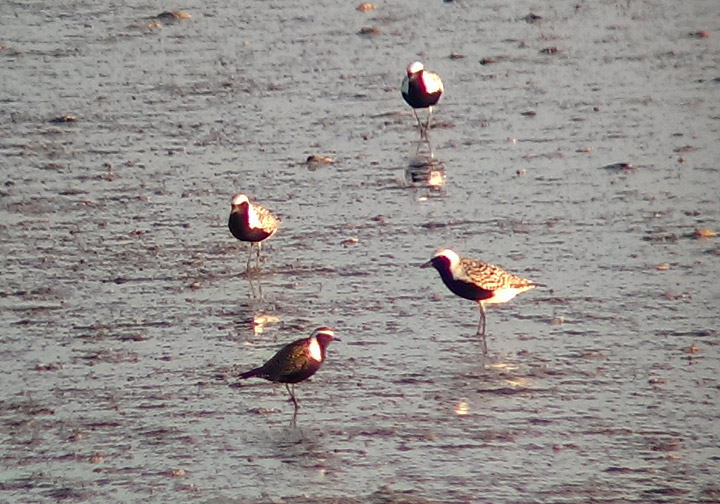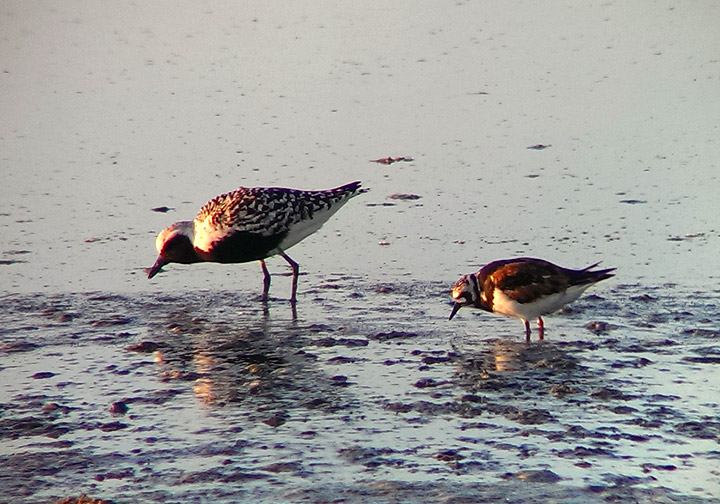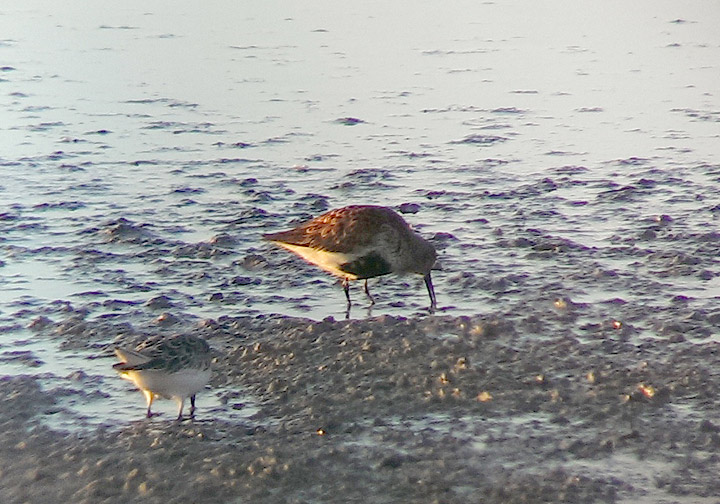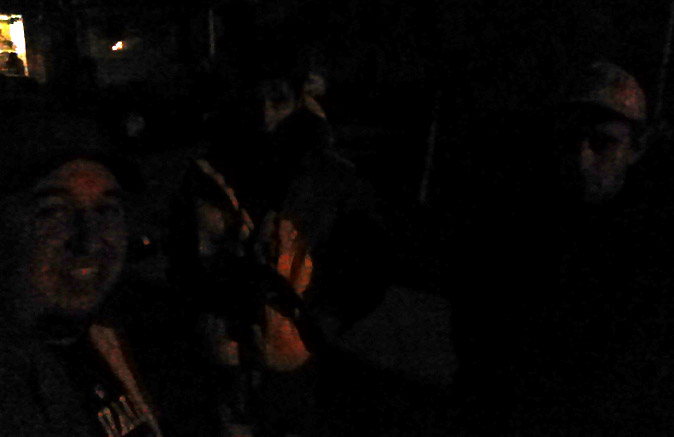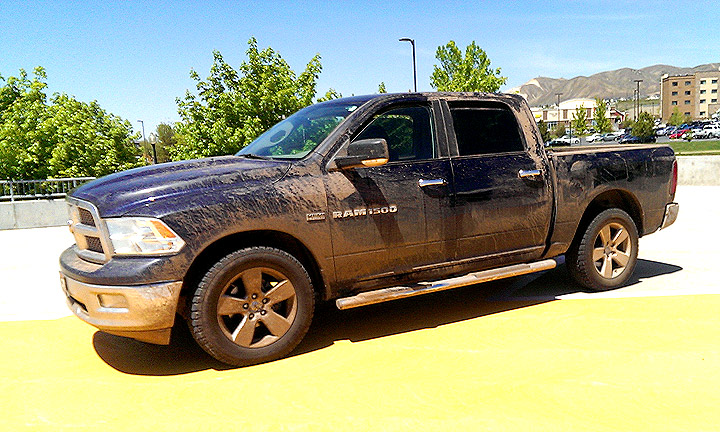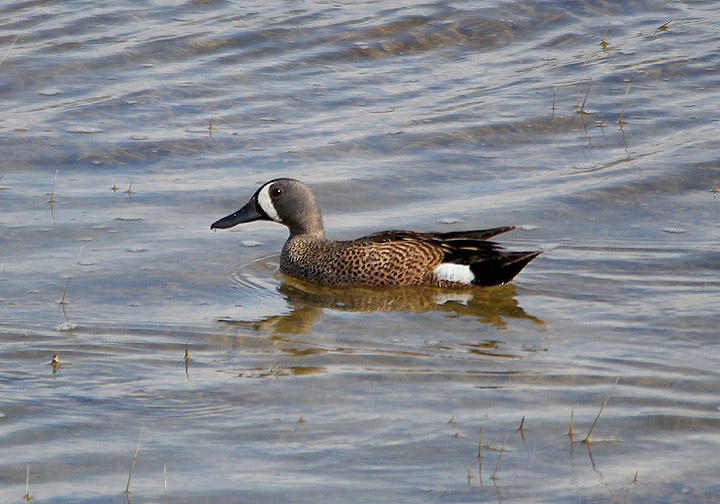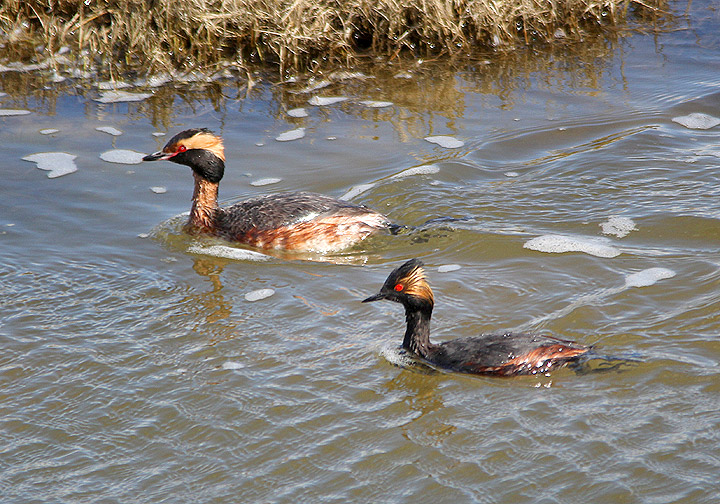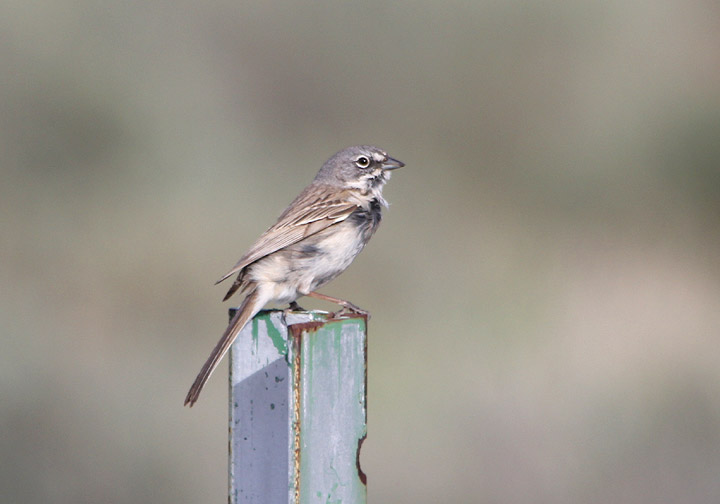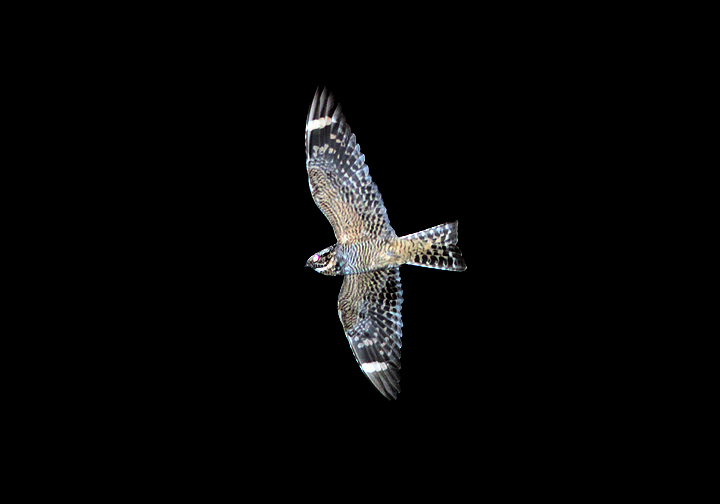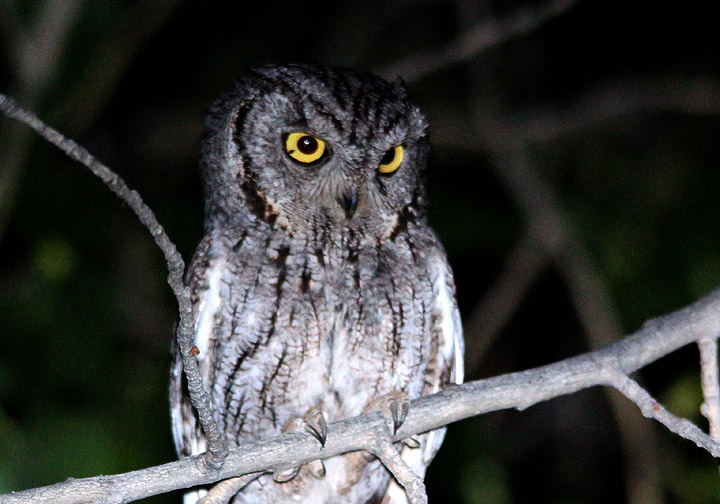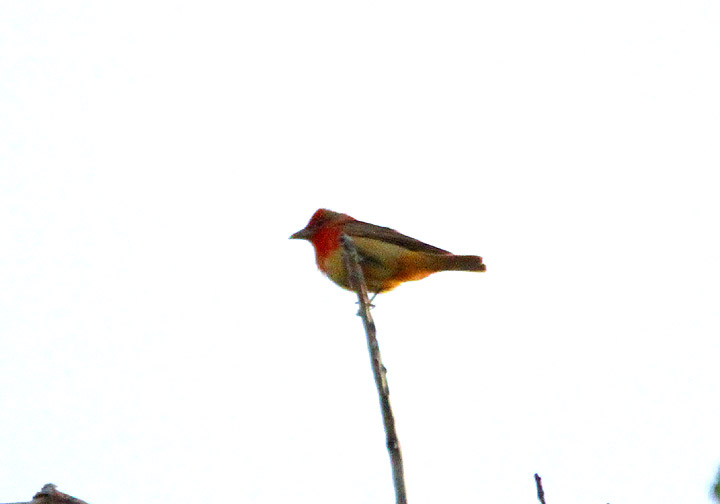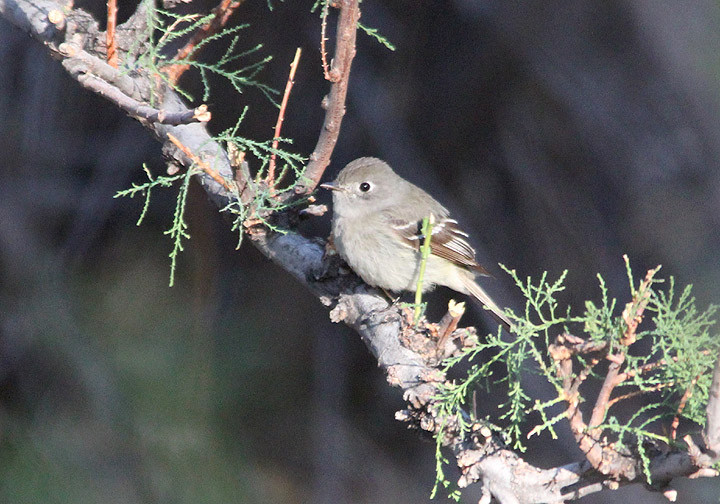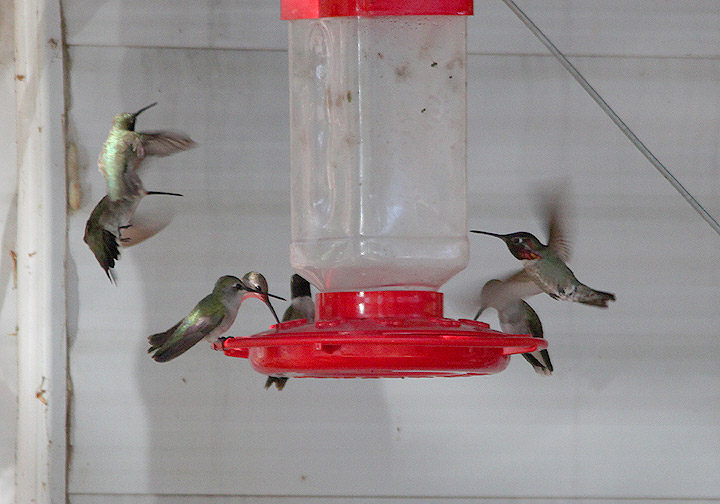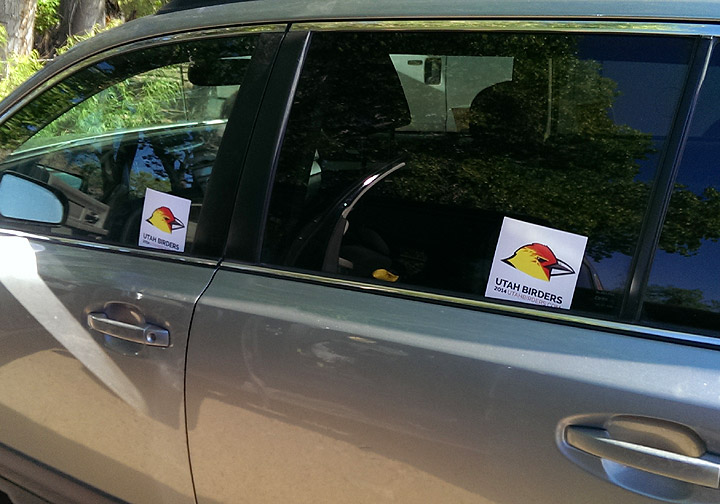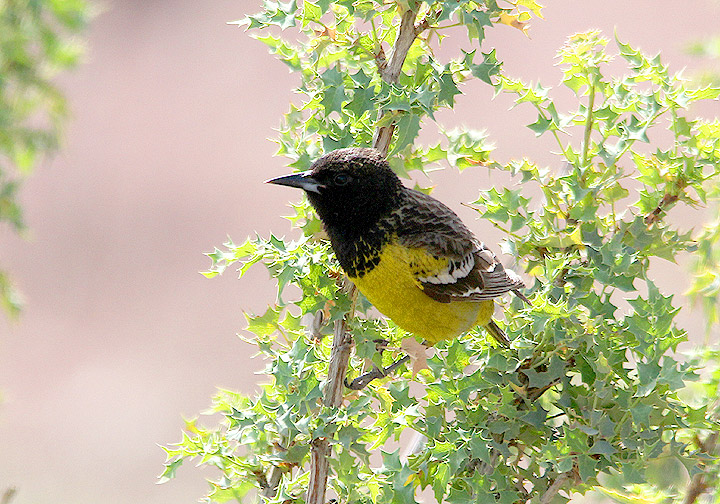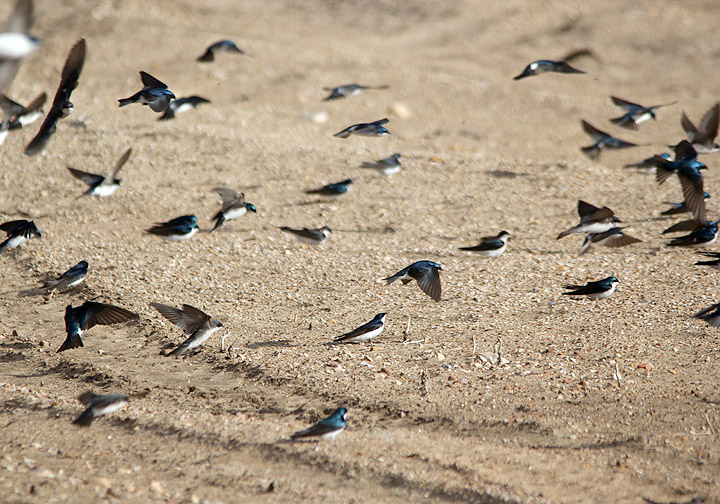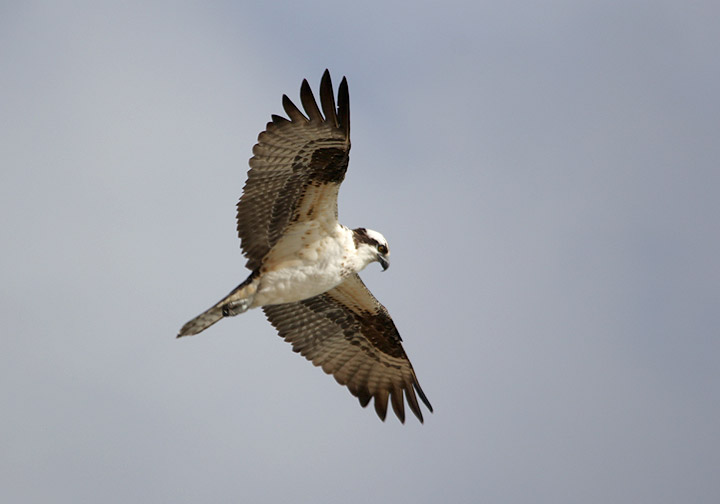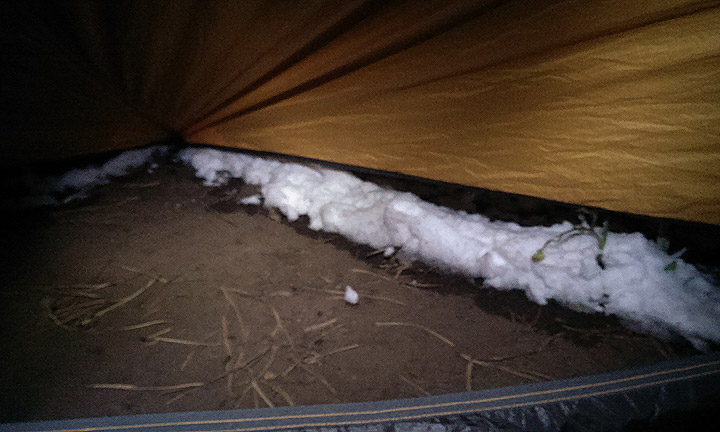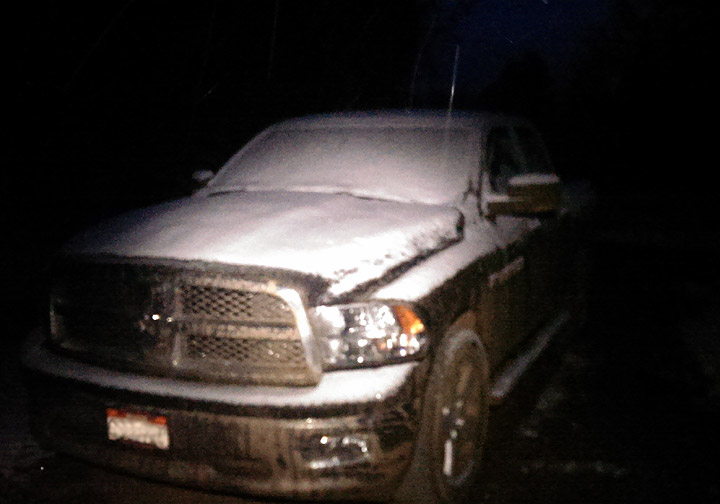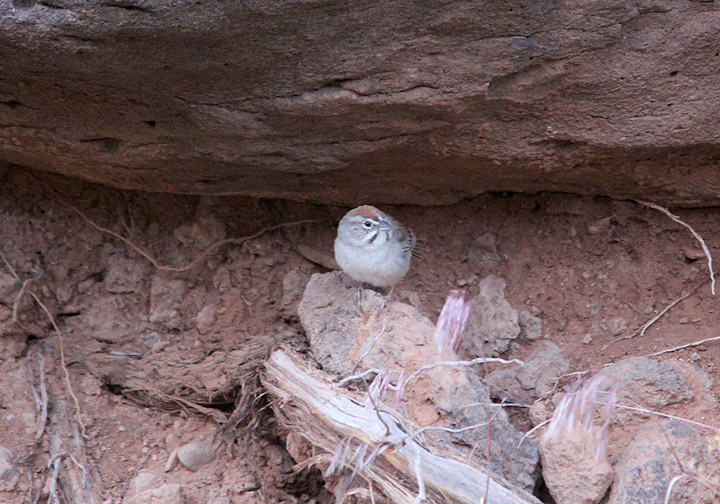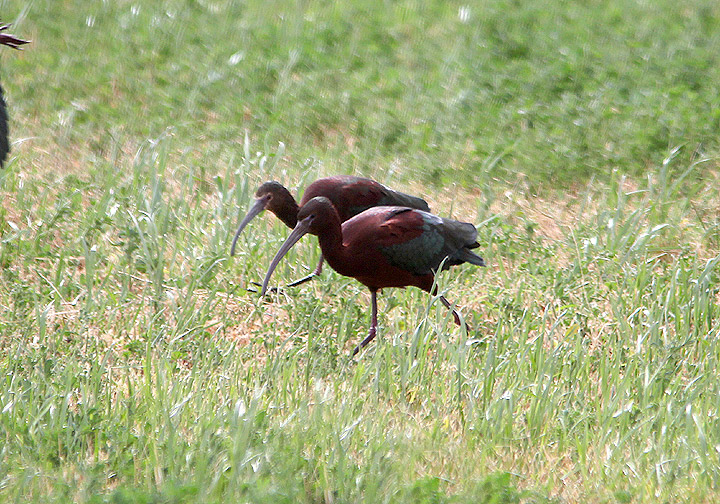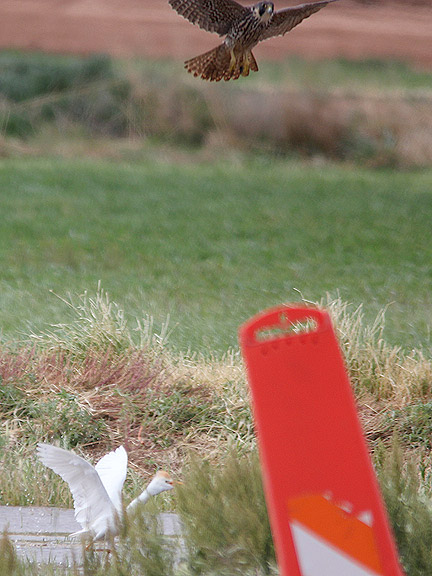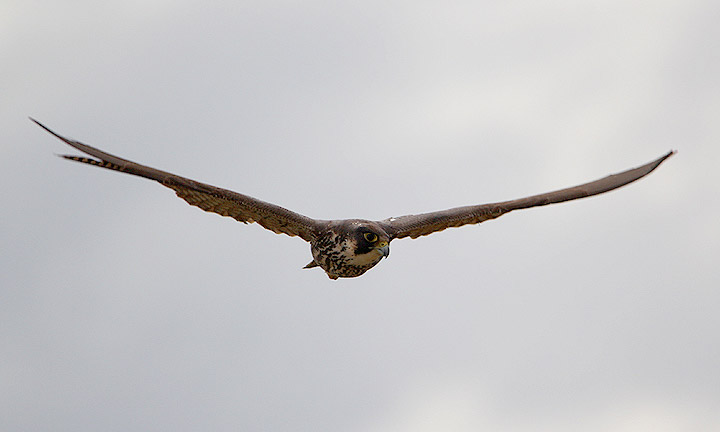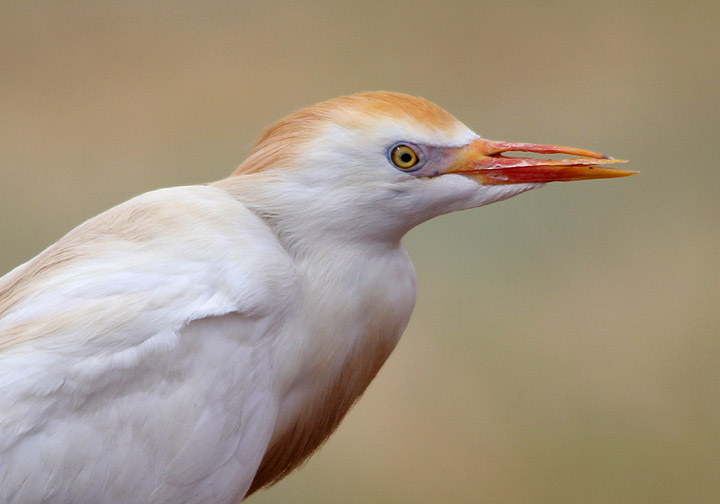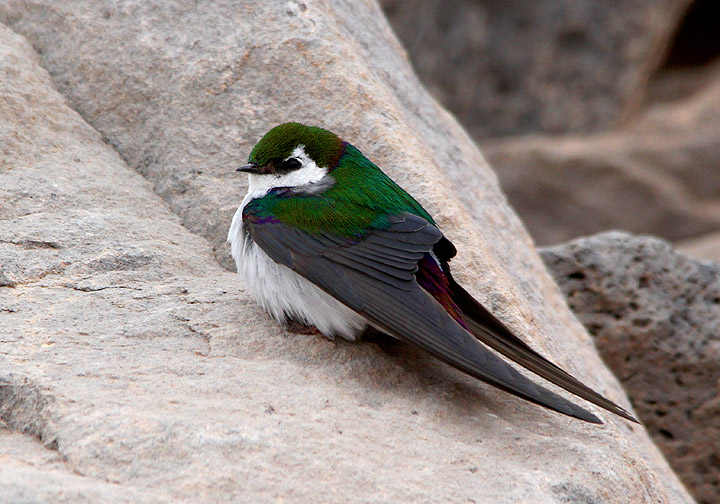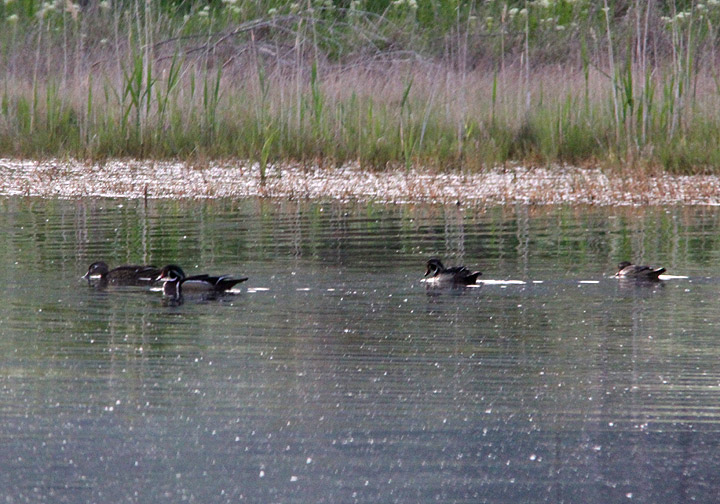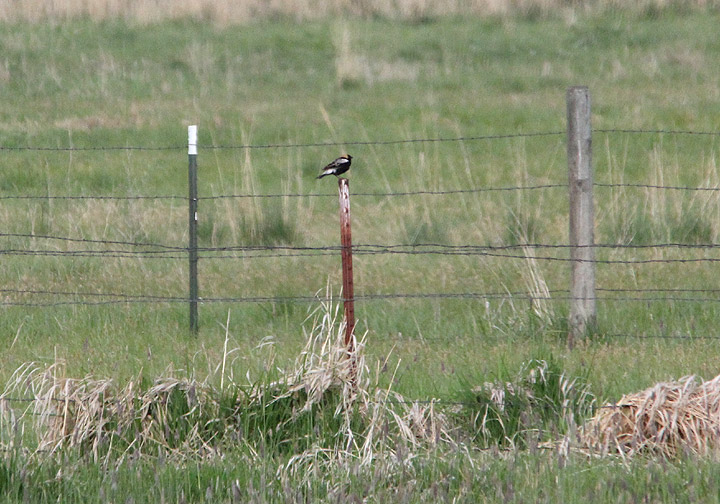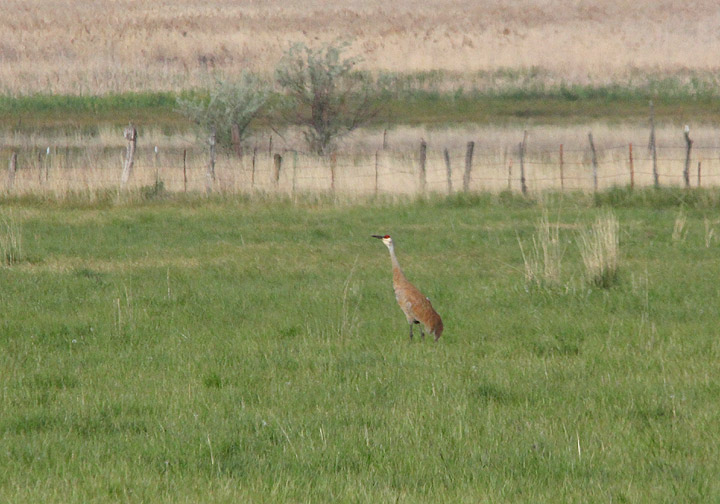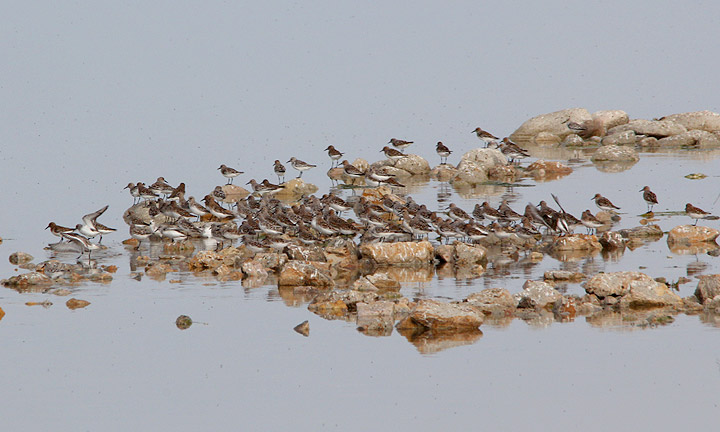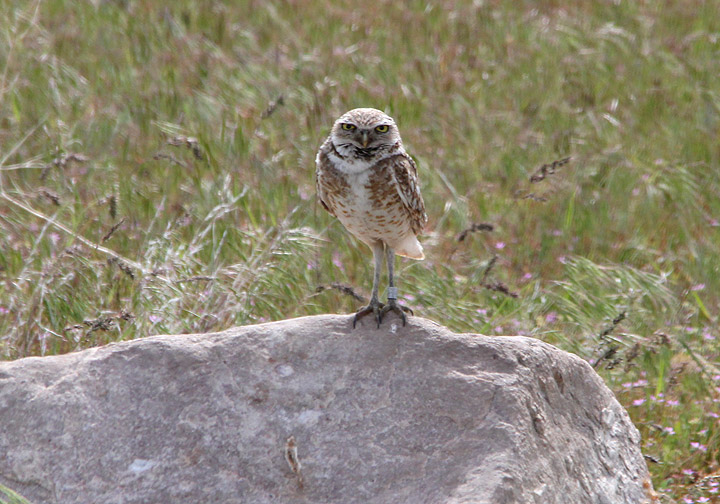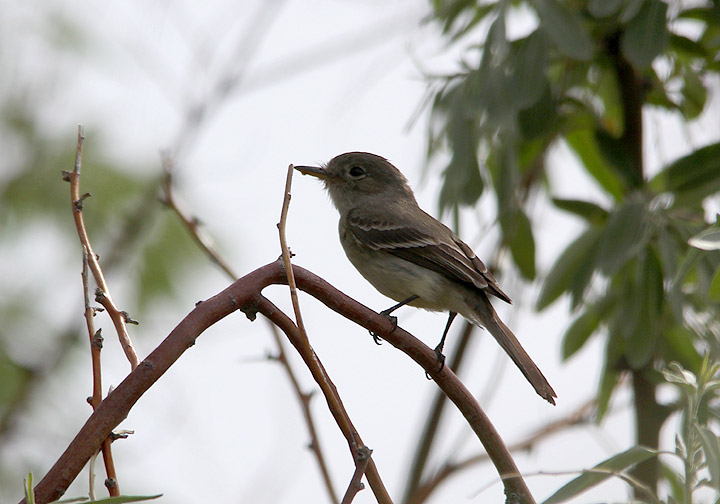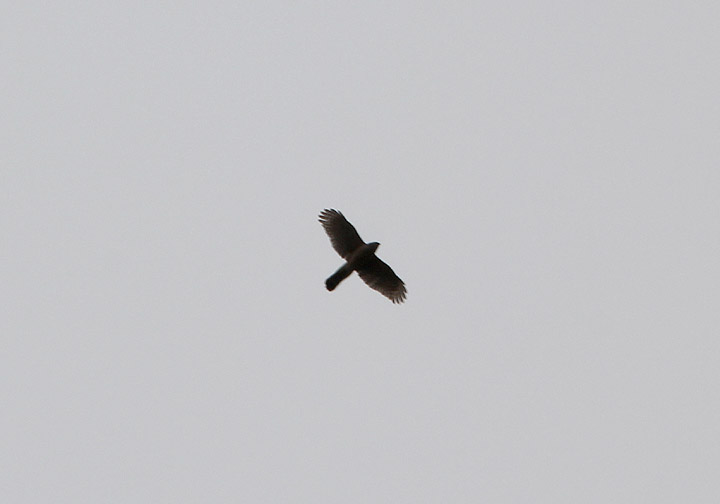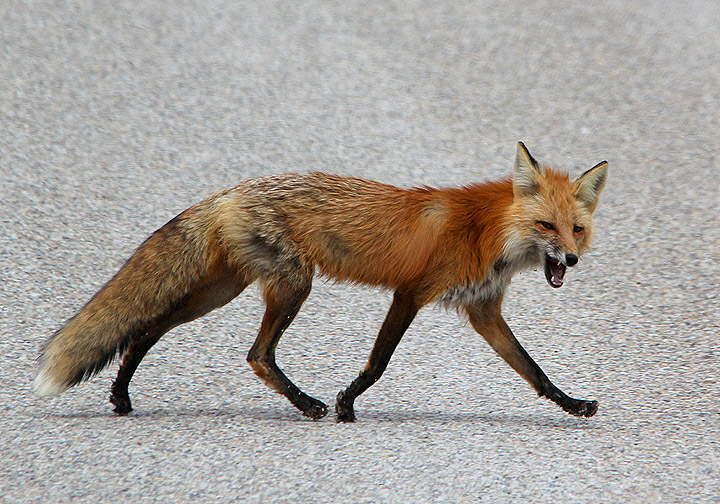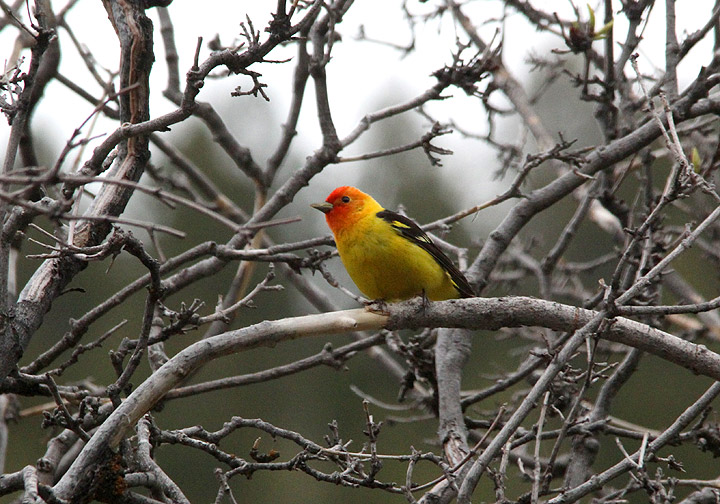Labels: identification, raptors
Utah Birds, Utah Birding, and Utah Birders. Promoting the sharing of information, and the conservation of habitat for birds in Utah and elsewhere. We are a group of people who want to share what we know, and create a positive birding experience in Utah.
BIRDERS BLOG
a blog by and for Utah Birders
Bald Eagle Trick
posted by Jerry Liguori at
7:36 PM
on Friday, May 30, 2014
Instead of reposting, thought I would share a link to a Bald Eagle ageing trick. Check it out @: http://hawkwatch.org/blog
Utah Big Day Record pt. 2 - A Record 205 Species
posted by Tim Avery at
6:00 AM
Now if you had asked me if I was excited when Colby threw a pillow at me around 8:45pm on Sunday night, I think you know the answer was no. I didn't feel well rested and felt like the 4.5 hour nap was not going to be enough sleep to make it through the gauntlet we had setup for ourselves. Outside it was pleasantly mild and the skies were clear of clouds--more importantly there wasn't even a breeze and the almost full moon bathed St. George in a pale glow. We gathered our gear, packed the truck accordingly, and headed east towards La Verkin to gas up. Since our starting point for the route had been compromised due to the snow and temps currently hanging around freezing at 8,000', we decided to use our alternate route where we started in Springdale--just like 2012. However Colby convinced us to head into Zion National Park to see if we could luck our way into a Spotted or Northern Pygmy-Owl with some last minute pre-scouting.
As we wove along SR-9 making stops we weren't hearing much, and our whistling for poorwills and pygmy-owls wasn't turning up any birds. We did have a Gray Fox sprint across the road which was a cool sighting. Eventually we stopped near a small creek tumbling down the hillside and a WESTERN SCREECH-OWL came in providing us great looks--this would be an early bonus if we could snag it in about an hour so we wouldn't have to try later. At our next stop in the quiet of the night a CANYON WREN burst into song--we again hoped for a little luck when we came back a while later. We hadn't heard any other owls and decided on one last stop at 11:45pm--if we didn't get lucky here we would head back and start our night where we had the wren. It was fortuitous though--as we stood in the moonlight admiring the spires and red rock towering above us, a faint cough of a SPOTTED OWL echoed its way towards us. 3 minutes later we heard it again, and then again, and then we thought we heard from a different location. 11:56pm and it bellowed out again... 11:59pm and we sat anticipating, would it call again before midnight or hold off... 11:59 and 50 seconds "ha ha ho ho ho"... silence.... midnight. The big day had begun and the owl was silent.
We stayed eerily still holding our breath as 12:01 passed, and then 12:02 came and we were able to relax--the SPOTTED OWL staccato echoed quietly in the distance, our 1st bird of the day--and we were off to the races.
Down the canyon we drove--the Canyon Wren didn't respond to playback where it was the previous hour so we moved on, snagging COMMON POORWILL singing in the canyon while we called in the WESTERN SCREECH-OWL we had seen a little earlier. We made our way out of the park and through Springdale in the dark. We made a quick stop to try for Rufous-crowned Sparrow where we got one in the dark in 2012 but missed out. Our next stop was Grafton, which seemed to take forever to get to on the back roads. We tried for VERMILION FLYCATCHER at our first stop with no luck. At our second stop however a male burst into song in the dead of the night, while a YELLOW-BREASTED CHAT sang somewhere along the river and a KILLDEER called from a nearby field.
We continued on our route stopping again to try for Rufous-crowned Sparrow without luck. We did however pickup audibles of GREAT HORNED OWL, LONG-EARED OWL and heard a few more poorwills. Making good time we eventually ended up in Hurricane at Stratton Pond with our spotlight on the water. The first birds we saw were a couple AMERICAN WIGEON, followed by CANADA GOOSE, WESTERN GREBE, and a hard to get RED-BREASTED MERGANSER. We must have flushed a BLACK-NECKED STILT from the shore as it circled calling overhead. Wasting no time we headed across the highway to Sand Hollow where I thought we might be able to spotlight the shore from the south end--it was a pretty hair-brained idea as we weren't able to see anything. A quick stop to try for roadrunner only turned up a singing COMMON POORWILL so we raced on to the Washington Fields. A last minute decision to take a different route to our next stop ended up getting us our only LESSER NIGHTHAWKS of the day, with 4 birds sitting on the road under the streetlamps.
At 2:29am we entered Seegmiller Marsh after receiving permission from Tom Seegmiller to do so--in our 44 minutes here we had our only COMMON GALLINULE, BARN OWL, CATTLE EGRET, and GREAT EGRET of the day. In all we tallied 16 species (+ Mute Swan which we didn't count for the day) including our first SORA, YELLOW WARBLER, MOURNING DOVE, EARED GREBE, and that wing-tagged AMERICAN WHITE PELICAN mentioned in my previous post. We missed several Virginia Rail which we knew we could get later, but struck out on Green Heron, and Least Bittern, which are believed to possibly nest here.
Dashing across St. George we skipped several planned stops from our route because there was no point given the birds we planned to see were not present as of scouting time. We skipped out on spotlighting Ivin's Reservoir to save time, knowing we would stop back after daylight--later we realized we had time to make that stop but in the moment it didn't seem worth it. At 3:47am we arrived near the inlet to Gunlock Reservoir and found the rocks Kenny and I set up to spot the black-hawk nest. In under 3 minutes we setup the scope spotlighted the nest, got everyone their COMMON BLACK-HAWK for the day and were back on our way. Between Gunlock and Lytle Ranch we added no new birds and arrived about 20 minutes ahead of schedule--it was still pitch black outside as the moon had set and we took advantage by napping in the car for about 25 minutes--outside the car a GREAT HORNED OWL hooted, COMMON POORWILLS sang, and a probable LONG-EARED OWL grunted once from the the trees.
At 5:36am we parked at the ranch and walked in--all was quiet and barely light as we made our way through the housing area, past the orchard, and the main pond without a single bird. It wasn't until almost 20 minutes in when we heard our first ASH-THROATED FLYCATCHER of the day singing from the river. Slowly the wash came to life with the expected YELLOW and LUCY'S WARBLERS, and BEWICK'S WRENS. We made it to the end of the ranch property spending a few minutes waiting to see if things throttled up. Things didn't. We headed to the creek to follow it back to the pond area. We slowly started to add birds with CORDILLERAN FLYCATCHER, BELL'S VIREO, MACGILLIVRAY'S WARBLER, BULLOCK'S ORIOLE, and WESTERN KINGBIRD. We spread out about 50' apart to comb the wash, hollering if anyone got anything new so the others could come see it. I caught glimpse of a thrush flyby but couldn't relocate it. We kept heading down stream and eventually I heard Colby and Kenny holler at me to come over--they had a dark backed thrush that looked like a Veery or Swainson's Thrush. As we stood watching the bush it popped to the top--it was a VEERY!!! A completely unexpected bird for any outing in Utah and a huge add for the day. The stop turned out to be very fruitful as HAMMOND'S FLYCATCHER and WILLOW FLYCATCHER both called from above, while a PLUMBEOUS VIREO and YELLOW-BREASTED CHAT made their way through as well.
We started adding the expected species with SUMMER TANAGER and WESTERN TANAGER, BLACK-HEADED GROSBEAK, DUSKY FLYCATCHER, WARBLING VIREO, and AMERICAN KESTREL. Finally back at the pond we added PHAINOPEPLA and both BLUE-GRAY and BLACK-TAILED GNATCATCHERS. On the road back to the orchard a BLUE GROSBEAK started calling from the treeline, saving us a stop later in the morning. An audible WESTERN WOOD-PEWEE was a nice addition and the only of the day. In the orchard the Mulberry tree was the center of activity--grosbeaks, orioles, and tanagers filled the limbs, while CEDAR WAXWING, LAZULI BUNTING, and LESSER GOLDFINCH were new additions for the day. SAY'S PHOEBE and BLACK PHOEBE were added between the orchard and the parking lot A quick stop at the hummingbird feeders turned up the expected BLACK-CHINNED, and with some scanning and patience we added COSTA'S and ANNA'S HUMMINGBIRDS before heading to the truck. We added a singing CACTUS WREN here, but still didn't have Brown-crested Flycatcher and tried there, but had no luck--this would be a huge miss. We headed back towards the river, stopping at the corrals where we added GRAY FLYCATCHER--our 5th and final empid species all before 8:00am--invaluable to us, saving precious time and luck later in the day. We pulled up to the river and after a short playback heard the familiar song of a BROWN-CRESTED FLYCATCHER in the trees.
With 57 species at the ranch we were at 79 total species for the day. Although this was 3 short of our expected tally at this point, it was a good start with some great birds. Interestingly we had 57 estimated species here on our planning sheet so we were right on target #'s wise--but we had missed some huge needs including Hooded Oriole, White-winged Dove, and Greater Roadrunner--these could be costly later in the day. Leaving the ranch we raced across the Beaver Dam Slope adding NORTHERN MOCKINGBIRD and LOGGERHEAD SHRIKE along the way. A stop at a staked out CRISSAL THRASHER was a welcome addition, before making our way back to paved roads and up to Utah Hill.
At Utah Hill the expected GRAY VIREO and BLACK-CHINNED SPARROWS were present. Up a side road we had the audible from a SCOTT'S ORIOLE, several BUSHTITS, both SPOTTED and GREEN-TAILED TOWHEES, and both BREWER'S and LARK SPARROWS. Somehow we missed scrub-jay, but pressed on. Near the town of Shivwits along old Highway 91 we got a surprise PEREGRINE FALCON attacking a NORTHERN HARRIER, both were added bonuses early in the day. We rolled into Ivin's Reservoir, quickly netting our NEOTROPIC CORMORANTS perched in the trees on the north end of the reservoir. In a matter of minutes we had all 6 TYPICAL SWALLOWS out over the water, along with REDHEAD, RUDDY DUCK, SPOTTED SANDPIPER, and an unexpected BLACK-CROWNED NIGHT-HERON.
We were only about 15 minutes behind our schedule, but every minute counts, so we trekked on stopping at Tonaquint Nature Center for a quick ABERT'S TOWHEE, and our only WILSON'S WARBLER of the day. In less than 4 minutes we were on the road, and soon thereafter on I-15 headed north to SR-9. We booked it to Sand Hollow State Park and the dam where we quickly added COMMON LOON, FORSTER'S TERN, and RING-NECKED DUCK. We had to rush around the reservoir to the south side to see if any of the gulls and terns form yesterday were still there--most weren't--we had CALIFORNIA, RING-BILLED, and FRANKLIN'S GULL along with CASPIAN TERN. No Bonaparte's or Herring Gulls, and the only shorebird was a BLACK-NECKED STILT. As we raced back towards the entrance I saw a distant truck so slowed to the 25mph limit--as it got closer I could see it was a wildlife cops vehicle and he pulled over as we approached--I thought for sure he was going to nail us--I won't say how fast we were going down the desolate road, but fast enough for a ticket. But as we passed he waved and we kept going. It was our only close call with law enforcement all day.
Over 100 species for the day and nearing 10:00am we raced on towards our staked our RUFOUS-CROWNED SPARROW and CANYON WREN which both were picked up with ease. At this point we entered the make-it-or-break-it section of the day on Kolob Terrace. The biggest issue with going here is the time in and out. On paper it should be 90 minutes roundtrip, leaving less than 90 minutes for upwards of 10 stops for birds. We had 42 target species to get here, and if we didn't have time to get them, or missed them out right, the big day would be over before we even left southern Utah--much like our 2012 experience.
Under the gun we birded fast and efficient. 2 stops lower on Kolob Reservoir Road in the Pinyon-Juniper habitat added JUNIPER TITMOUSE, VIRGINIA'S WARBLER, BLACK-THROATED GRAY-WARBLER, ORANGE-CROWNED WARBLER, and CHIPPING SPARROW. Driving along we skipped one planned stop having snagged the birds needed at the previous stops. Finally we added WESTERN SCRUB-JAY and had nice looks a COOPER'S HAWK as we passed through the Gambel's Oak. At Big Bend we added the expected PYGMY NUTHATCH, and at our next stop further up the road in the Ponderosa forest we got the needed GRACE'S WARBLER, and our first STELLER'S JAY, and MOUNTAIN CHICKADEES.
Before we knew it, we were back ahead of schedule and hitting our targets as we stopped. VESPER SPARROW, NORTHERN FLICKER, and LEWIS'S WOODPECKER at our next stop. CASSIN'S FINCH along the road--and finally there it was--the snow and wind. Although it was sunny, it was a bit cold, and there were still snow drifts on the road. The wind made a couple of stops pointless, and we were soon at Blue Springs Reservoir headed to Lava Point. I checked the tree where the BALD EAGLE had been the day before and it wasn't there--so I moved to the tree where I saw it a couple times last year, and sure enough in the enormous Ponderosa it was sitting. Species #132 for the day.
Along the muddy and snow-drifted road here a Prius was snowed in from the previous day. As we drove on the road became increasingly slick so we parked and opted to walk in. As it turned out just ahead the road became a lot less muddy, but parking the car turned out to be the right decision. On the short walk we picked up a lot of species including the expected RED-BREASTED NUTHATCH, DARK-EYED JUNCO, YELLOW-RUMPED WARBLER, RUBY-CROWND KINGLET, and RED-NAPED SAPSUCKER. However, it was the fringe species that really made it worth while. Kenny and Colby found a FOX SPARROW, while Kenny and I had a HERMIT THRUSH. Colby tracked down both WHITE-BREASTED NUTHATCH and more importantly a WILLIAMSON'S SAPSUCKER. Each and every species was clutch. Trying to stay ahead of our schedule we raced back to the truck and headed passed Blue Springs to Whispering Pines sub-division where we spent a good deal of time trying for birds we thought might be there without any luck. On the drive out however we snagged our ACORN WOODPECKER, and both WESTERN and MOUNTAIN BLUEBIRDS.
We decided to make a quick stop at Kolob Falls and joked about finding Dipper here. I stayed at the car to work on tallying and seeing what we missed and still needed when I heard Kenny yell, "AMERICAN DIPPER!!!". Sure enough in the stream below there was a dipper--and added bonus meaning we wouldn't have to possibly wade in freezing water late at night in northern Utah to try for one at a nest site. Up the road we continued to a patch of trees that has usually been good for woodpeckers. We got skunked--frustrating as there had been 4 Downy Woodpeckers here just 40 hours earlier. We did however add a WILSON'S SNIPE calling from the wet fields nearby--and while we were stopped had the flyover of the day when a "prairie" MERLIN sped past. At the tail end of their spring migration north this was a huge addition. We eventually had a Hairy/Downy Woodpecker flush and fl directly away from us. And per big day rules we could count it as 1 species, unless we eventually saw one of the others which would take precedence.
Our last stop heading up was at Kolob Reservoir where Colby picked out RED-NECKED PHALAROPE on the water among the throngs of swallows. BREWER'S BLACKBIRDS along the shore were new for the day, and finally we picked up 2 soaring OSPREY literally getting every expected species on Kolob Terrace, with the exception of the 2 woodpeckers, rare finches, and California Condor. Going back down the mountain we made numerous stops to try for woodpeckers, eventually getting lucky and finding a HAIRY WOODPECKER after exhausting every good looking piece of habitat. We would not get Downy Woodpecker for the day--a bird we thought was 100% given the staked out individuals.
Out of the mountains and back on highway we were done birding in southern Utah just after 1:00pm. We were ahead of schedule, and had 4 stops between here and Farmington Bay where we expected to arrive around 7:00pm. We had somewhere around 160 species, a couple ahead of what we had expected at this time, and still a good number of species ahead of us... We made one stop in Iron County along I-15 where after a few minutes of searching we picked up 2 SAGEBURSH SPARROWS a little ways from where we had them the previous week. A quick stop in Beaver for gas and we were back on the interstate fling north. BLACK-BILLED MAGPIE, EUROPEAN STARLING, and SWAINSON'S HAWKS all were new additions as we drove. Colby and Kenny scanned the skies while taking turns napping. Eventually it paid off and we added GOLDEN EAGLE. I missed one bird that they were able to get as they spotted PINYON JAY flying along their side of the car.
About 10 minutes ahead of schedule we pulled in to Chicken Creek Reservoir where we had a laundry list of waterfowl and waterbirds to pick up. This stop would tell us if we realistically could make it to 200 or not. As soon as we started looking the birds started popping up. COMMON GOLDENEYE, BLUE-WINGED TEAL, LESSER SCAUP, GADWALL, CINNAMON TEAL, GREEN-WINGED TEAL, NORTHERN PINTAIL NORTHERN SHOVELER, and BUFFLEHEAD filled our waterfowl quota. We couldn't pick out any rare waterfowl, but Colby eventually relocated the HORNED GREBE we had on Friday. HORNED LARK rounded things out, while the wind came up strong and kept us from adding Sage Thrasher at our previous stake out. We had fallen slightly back behind schedule taking the extra time to keep trying for thrasher.
The wind and rain was raging for a good portion of our drive but calmed as we headed further north. In the back seat Colby began tallying species to give us an official count... He finally told us we were at 180 species for the day--we had broke our 2012 campaigns tally! He handed the list to Kenny to double check and we found we were actually 2 birds short--the tally was actually 182 ad Colby had forgotten Crissal Thrasher and one other species from the list. We were 20 species from tying the previous record with a decent list of should gets, and can gets left. We stopped in Provo and picked up our staked out COMMON GRACKLE. We also tried for Black-capped Chickadee without luck before getting back on the highway ahead of schedule again by a few minutes.
From Provo north I think we all felt nervous--we had been tracking traffic online and there had been some slowing for pretty good portions of our main route and alternate path. But as we sped north in the diamond lane things cleared up allowing us to fly through Salt Lake county at the tail end of rush hour only having to touch the breaks once to avoid a psychotic road raging driver who was having it out with another car--he cut us off so close that had I not hit my breaks he would have clipped us. Before we knew it we rolled into Farmington almost 30 minutes ahead of schedule--the extra time built into for poor traffic was a non-factor and we could press things here and at the causeway if needed. Right off the off ramp, Colby and Kenny thought they hear a chickadee, so we went back so I could get it. There was no chickadees, just starlings, but there along the fence were 2 CALIFORNIA QUAIL! Thank goodness we turned back. Onto Glover Lane heading west we added SANDHILL CRANE in the fields along the way.
As we pulled onto the lane leading into the entrance the gate was closed--we were here after the typical 5:00pm closing time, but never before had I actually seen the gate closed when I've come after 5:00pm this time of year. We exited the vehicle and scrambled down the road. A RING-NECKED PHEASANT flushed nearby but we couldn't get Marsh Wren, Yellowthroat, or Virginia Rail to respond to playback. The dowitchers from the week before were all gone, and shorebirds were non-existent. As we went to leave I made one last scan on the shore and spotted a MARBLED GODWIT with its head tucked--the only of the day and an almost missed!
We headed down to the end of Glover Lane where we finally added MARSH WREN but were short the other species. We made one last stop on the east edge of the nature trail at the nature center and hiked south along the trees. We quickly picked up VIRGINIA'S RAIL and COMMON YELLOWTHROAT. We still hadn't found Wood Ducks, and tried a few other calls for birds that might be around but left without any of them. I don't think it registered with any of us the rest of the night, but the following day I realized we never even tried for Savannah Sparrow here--an easy get usually and a HUGE oversight on our part that could have been disastrous.
As we hoped back on I-15 we talked about what to do--we had built in a stop to try for Bobolink, but wondered if they had arrived yet with no reports (we later found out they hadn't). We still didn't have chickadee or crow and both were possible on the way to the bobolink spot. We kept going back and forth and as we got to the exit planning to get off, we decided last minute not to for fear of missing crow on Antelope Drive--but not 100 yards further there was an AMERICAN CROW flying onto a cell tower next to the interstate! We decided to get off and go back at the next exit, but then again changed our mind at the exit and decided to go all in on the causeway where we would either get to 203 or we wouldn't before dark... the crow was species #191 for the day.
Down Antelope Drive we went, I'm sure we were all running over the numbers in our heads... 4 species of plover, 4 species of sandpiper, Turnstone, Dunlin, Sanderling, Curlew, Dowitcher... Those were just the shorebirds--we also had a shot at Burrowing Owl, Chukar, and Sage Thrasher once on the island. You could taste 203. On the causeway we made our way west towards the first bridge. I stopped at a pile of rocks amid protest from my cohorts--I insisted this was the best place for Snowy and Semipalmated Plovers, while they wanted to check further west. None-the-less it took only 1 minute to get both SNOWY and SEMIPALMATED PLOVER, numbers 192 and 193.
We continued past the bridge to where the shorebirds covered the beaches. Immediately we added BLACK-BELLIED PLOVER, SANDERLING, and RED KNOT. I spotted a BAIRD'S SANDPIPER but neither Colby or Kenny managed to get on it--that one wouldn't count.
196 species and counting we headed further west. While Colby and Kenny scanned north, I scanned south finding first an AMERICAN GOLDEN PLOVER followed quickly by our first of 3 RUDDY TURNSTONES. 197 and 198...
We still needed sandpipers. Colby scanning hard found 199 with a LEAST SANDPIPER followed a few minutes later with WESTERN SANDPIPER for #200. We had hit 200 species with daylight left and a few birds to go. We kept moving west checking more shorebirds--the peep flocks that had been reported were nowhere to be found--yet 1,000's of Sanderlings, and 140 Red Knots were an incredible sight. At our next stop Colby said he heard a DUNLIN give it's flight call, which I wouldn't have recognized--it didn't matter a few moments later we spotted it along the shoreline for #201.
We reached the end of the flocks and turned back--we had to find some peeps, dowitchers or a curlew. I tried my hardest to turn distant WHITE-FACED IBIS into dowitchers, but it wasn't happening. We were running out of daylight. Knowing we needed to get a few more before twilight we continued down the causeway westward as the sun set over the Great Salt Lake officially at 8:35pm. We would have 31 minutes till it was dark and needed 2 more birds.
We knew there was a Burrowing Owl near the last bridge on the causeway thanks to some scouting the previous week from Jeff Bilsky who was unable to make the trip--sure enough as we walked towards the area, the bird flew from the beach up to the sagebrush--#202, we had tied the previous Utah Big Day record!!! We didn't celebrate with more than a few high fives and "hell yeahs" before getting in the car again--we still needed one more to break the record. Onto the island we went, knowing we might stumble across a Chukar on the visitor center loop. Colby was the first to hear one outside the car, while I spotted one sitting on the rocks near the visitor center. CHUKAR was bird #203 for the day, it was unofficially a new record. But we weren't done--we continued on the island trying unsuccessfully for Long-billed Curlew and Sage Thrasher again. It was dark by the time we left the island and headed towards Ogden to try for Wood Duck at Beus pond after dark.
So about this time, 21.5 hours into the day time kind of just passes and you float along. It never occurred to me that we wouldn't get Wood Ducks here in the dark, after all during the day they were common. On paper good idea--in practice, miserable failure. After the long drive here and searching the entire pond not a single Wood Duck was to be seen. I am sure some were in the nest boxes on the water, but the rest were roosting, probably in trees, but where we did not know. Oops. I will admit that I didn't really think through the after dark section of our big day too much--honestly we threw some ideas around but really figured it would depend on where were were at that point. We didn't want to settle on 203 with 2 hours left in the day but our options were limited. I think had we planned things a little better at this point we still could have eked out 3 to 4 more birds. But we stuck to the original plan I laid out and headed to East Canyon Reservoir where I had Common Mergansers the previous week--spotlighting there proved hard and we only saw Mallards and Canada Geese. We were down to playing our final card in upper East Canyon and the prospect of being stuck at 203 looked like it might be reality with the temperature hovering at 30...
We drove quietly up the canyon, narrowly missing 2 Porcupines crossing the road. Soon we pulled into the predetermined stop for owls and grouse and exited the vehicle. To all of our surprise there were multiple FLAMMULATED OWLS calling in the trees around us--what a relief. And as we sat there getting ready to go up the road for RUFFED GROUSE, we could hear/feel the booming coming from the nearby forest. Species #204 and #205 for the night, with just under an hour remaining. We could still possibly get two more species of owls so we trudged on making a stop for Northern Saw-whet Owl. I swore I heard one respond twice to my whistling, but no one else heard it and the bird didn't respond on my third an forth volleys. As much as it would have been a nice addition we left without it. Stops for Pygmy-Owl were also unsuccessful and about 30 minutes before midnight we saw our last bird of the day--not a new species, but another LONG-EARED OWL cruising across the road. Two more stops to try for the small owls and we heard more FLAMMULATED OWLS, but that was it. Somewhere in Emigration Canyon the clock struck midnight and just like that, the day was over.
We hopped back on I-80 and made our way into Salt Lake City, dropping Kenny off, then Colby. Finally, I parked my truck in my garage sometime around 1:00am. I had been awake for 28 hours with nothing more than a quick nap at Lytle almost 23 hours earlier. We had driven 715 miles during the day, and 1,393 during the weekend... I needed a hot shower to warm back up and then crashed, and didn't wake up till after 9:00am that morning. I could have slept all day but had to get back to the real world and work. It was an absolutely incredible day--the best day of birding I have ever had. I've birded in some of the most amazing places on earth, but never seen 200 species in a day until now--and it was right in my own backyard.
And that's that. 205 species on May 12, 2014 in Utah. Here is something to chew on... we missed the following birds that we saw while scouting, or had been reported in the 24 hours leading up to the day:
WOOD DUCK, COMMON MERGANSER, Canvasback, Greater Scaup, Eurasian Wigeon, Surf Scoter, Long-tailed Duck, Green Heron, Glossy Ibis, Sharp-shinned Hawk, Ferruginous Hawk, BAIRD'S SANDPIPER, Semipalmated Sandpiper, both Yellowlegs, Whimbrel, LONG-BILLED CURLEW, LONG-BILLED DOWTICHER, Herring Gull, Black Tern, Dusky Grouse, WHITE-WINGED DOVE, Greater Roadrunner, Northern Pygmy-Owl, Northern Saw-whet Owl, DOWNY WOODPECKER, Praririe Falcon, Cassin's Kingbird, Eastern Kingbird, Cassin's Vireo, Clark's Nutcracker, BLACK-CAPPED CHICKADEE, Brown Creeper, Golden-crowned Kinglet, Townsend's Solitaire, Swainson's Thrush, SAGE THRASHER, Lincoln's Sparrow, SAVANNAH SPARROW, HOODED ORIOLE, Red Crossbill, AMERICAN GOLDFINCH, and Evening Grosbeak.
The 12 birds in bold were all expected for the route. It's hard to say how much the weather played into some of the things we missed. A number of birds simply weren't present where they had been previously. And on some of them, like Sage Thrasher, the wind was probably the cause for missing out. The fact is you can't get every bird, but seeing what we did and what we missed it makes 210 or 215 seem in the realm of possibility if the stars aligned, the weather cooperated, migration was perfect, and everything goes as planned.
I guess we'll just have to wait and see if we'll do it again, I guess that may depend on if Mark and David come out of retirement to try and win back their prize ;)
Moonrise over Zion
As we wove along SR-9 making stops we weren't hearing much, and our whistling for poorwills and pygmy-owls wasn't turning up any birds. We did have a Gray Fox sprint across the road which was a cool sighting. Eventually we stopped near a small creek tumbling down the hillside and a WESTERN SCREECH-OWL came in providing us great looks--this would be an early bonus if we could snag it in about an hour so we wouldn't have to try later. At our next stop in the quiet of the night a CANYON WREN burst into song--we again hoped for a little luck when we came back a while later. We hadn't heard any other owls and decided on one last stop at 11:45pm--if we didn't get lucky here we would head back and start our night where we had the wren. It was fortuitous though--as we stood in the moonlight admiring the spires and red rock towering above us, a faint cough of a SPOTTED OWL echoed its way towards us. 3 minutes later we heard it again, and then again, and then we thought we heard from a different location. 11:56pm and it bellowed out again... 11:59pm and we sat anticipating, would it call again before midnight or hold off... 11:59 and 50 seconds "ha ha ho ho ho"... silence.... midnight. The big day had begun and the owl was silent.
We stayed eerily still holding our breath as 12:01 passed, and then 12:02 came and we were able to relax--the SPOTTED OWL staccato echoed quietly in the distance, our 1st bird of the day--and we were off to the races.
Down the canyon we drove--the Canyon Wren didn't respond to playback where it was the previous hour so we moved on, snagging COMMON POORWILL singing in the canyon while we called in the WESTERN SCREECH-OWL we had seen a little earlier. We made our way out of the park and through Springdale in the dark. We made a quick stop to try for Rufous-crowned Sparrow where we got one in the dark in 2012 but missed out. Our next stop was Grafton, which seemed to take forever to get to on the back roads. We tried for VERMILION FLYCATCHER at our first stop with no luck. At our second stop however a male burst into song in the dead of the night, while a YELLOW-BREASTED CHAT sang somewhere along the river and a KILLDEER called from a nearby field.
We continued on our route stopping again to try for Rufous-crowned Sparrow without luck. We did however pickup audibles of GREAT HORNED OWL, LONG-EARED OWL and heard a few more poorwills. Making good time we eventually ended up in Hurricane at Stratton Pond with our spotlight on the water. The first birds we saw were a couple AMERICAN WIGEON, followed by CANADA GOOSE, WESTERN GREBE, and a hard to get RED-BREASTED MERGANSER. We must have flushed a BLACK-NECKED STILT from the shore as it circled calling overhead. Wasting no time we headed across the highway to Sand Hollow where I thought we might be able to spotlight the shore from the south end--it was a pretty hair-brained idea as we weren't able to see anything. A quick stop to try for roadrunner only turned up a singing COMMON POORWILL so we raced on to the Washington Fields. A last minute decision to take a different route to our next stop ended up getting us our only LESSER NIGHTHAWKS of the day, with 4 birds sitting on the road under the streetlamps.
At 2:29am we entered Seegmiller Marsh after receiving permission from Tom Seegmiller to do so--in our 44 minutes here we had our only COMMON GALLINULE, BARN OWL, CATTLE EGRET, and GREAT EGRET of the day. In all we tallied 16 species (+ Mute Swan which we didn't count for the day) including our first SORA, YELLOW WARBLER, MOURNING DOVE, EARED GREBE, and that wing-tagged AMERICAN WHITE PELICAN mentioned in my previous post. We missed several Virginia Rail which we knew we could get later, but struck out on Green Heron, and Least Bittern, which are believed to possibly nest here.
Dashing across St. George we skipped several planned stops from our route because there was no point given the birds we planned to see were not present as of scouting time. We skipped out on spotlighting Ivin's Reservoir to save time, knowing we would stop back after daylight--later we realized we had time to make that stop but in the moment it didn't seem worth it. At 3:47am we arrived near the inlet to Gunlock Reservoir and found the rocks Kenny and I set up to spot the black-hawk nest. In under 3 minutes we setup the scope spotlighted the nest, got everyone their COMMON BLACK-HAWK for the day and were back on our way. Between Gunlock and Lytle Ranch we added no new birds and arrived about 20 minutes ahead of schedule--it was still pitch black outside as the moon had set and we took advantage by napping in the car for about 25 minutes--outside the car a GREAT HORNED OWL hooted, COMMON POORWILLS sang, and a probable LONG-EARED OWL grunted once from the the trees.
Just before sunrise at Lytle Ranch
At 5:36am we parked at the ranch and walked in--all was quiet and barely light as we made our way through the housing area, past the orchard, and the main pond without a single bird. It wasn't until almost 20 minutes in when we heard our first ASH-THROATED FLYCATCHER of the day singing from the river. Slowly the wash came to life with the expected YELLOW and LUCY'S WARBLERS, and BEWICK'S WRENS. We made it to the end of the ranch property spending a few minutes waiting to see if things throttled up. Things didn't. We headed to the creek to follow it back to the pond area. We slowly started to add birds with CORDILLERAN FLYCATCHER, BELL'S VIREO, MACGILLIVRAY'S WARBLER, BULLOCK'S ORIOLE, and WESTERN KINGBIRD. We spread out about 50' apart to comb the wash, hollering if anyone got anything new so the others could come see it. I caught glimpse of a thrush flyby but couldn't relocate it. We kept heading down stream and eventually I heard Colby and Kenny holler at me to come over--they had a dark backed thrush that looked like a Veery or Swainson's Thrush. As we stood watching the bush it popped to the top--it was a VEERY!!! A completely unexpected bird for any outing in Utah and a huge add for the day. The stop turned out to be very fruitful as HAMMOND'S FLYCATCHER and WILLOW FLYCATCHER both called from above, while a PLUMBEOUS VIREO and YELLOW-BREASTED CHAT made their way through as well.
We started adding the expected species with SUMMER TANAGER and WESTERN TANAGER, BLACK-HEADED GROSBEAK, DUSKY FLYCATCHER, WARBLING VIREO, and AMERICAN KESTREL. Finally back at the pond we added PHAINOPEPLA and both BLUE-GRAY and BLACK-TAILED GNATCATCHERS. On the road back to the orchard a BLUE GROSBEAK started calling from the treeline, saving us a stop later in the morning. An audible WESTERN WOOD-PEWEE was a nice addition and the only of the day. In the orchard the Mulberry tree was the center of activity--grosbeaks, orioles, and tanagers filled the limbs, while CEDAR WAXWING, LAZULI BUNTING, and LESSER GOLDFINCH were new additions for the day. SAY'S PHOEBE and BLACK PHOEBE were added between the orchard and the parking lot A quick stop at the hummingbird feeders turned up the expected BLACK-CHINNED, and with some scanning and patience we added COSTA'S and ANNA'S HUMMINGBIRDS before heading to the truck. We added a singing CACTUS WREN here, but still didn't have Brown-crested Flycatcher and tried there, but had no luck--this would be a huge miss. We headed back towards the river, stopping at the corrals where we added GRAY FLYCATCHER--our 5th and final empid species all before 8:00am--invaluable to us, saving precious time and luck later in the day. We pulled up to the river and after a short playback heard the familiar song of a BROWN-CRESTED FLYCATCHER in the trees.
Cactus Wren singing on a Joshua Tree
With 57 species at the ranch we were at 79 total species for the day. Although this was 3 short of our expected tally at this point, it was a good start with some great birds. Interestingly we had 57 estimated species here on our planning sheet so we were right on target #'s wise--but we had missed some huge needs including Hooded Oriole, White-winged Dove, and Greater Roadrunner--these could be costly later in the day. Leaving the ranch we raced across the Beaver Dam Slope adding NORTHERN MOCKINGBIRD and LOGGERHEAD SHRIKE along the way. A stop at a staked out CRISSAL THRASHER was a welcome addition, before making our way back to paved roads and up to Utah Hill.
Gray Vireo at Utah Hill
At Utah Hill the expected GRAY VIREO and BLACK-CHINNED SPARROWS were present. Up a side road we had the audible from a SCOTT'S ORIOLE, several BUSHTITS, both SPOTTED and GREEN-TAILED TOWHEES, and both BREWER'S and LARK SPARROWS. Somehow we missed scrub-jay, but pressed on. Near the town of Shivwits along old Highway 91 we got a surprise PEREGRINE FALCON attacking a NORTHERN HARRIER, both were added bonuses early in the day. We rolled into Ivin's Reservoir, quickly netting our NEOTROPIC CORMORANTS perched in the trees on the north end of the reservoir. In a matter of minutes we had all 6 TYPICAL SWALLOWS out over the water, along with REDHEAD, RUDDY DUCK, SPOTTED SANDPIPER, and an unexpected BLACK-CROWNED NIGHT-HERON.
We were only about 15 minutes behind our schedule, but every minute counts, so we trekked on stopping at Tonaquint Nature Center for a quick ABERT'S TOWHEE, and our only WILSON'S WARBLER of the day. In less than 4 minutes we were on the road, and soon thereafter on I-15 headed north to SR-9. We booked it to Sand Hollow State Park and the dam where we quickly added COMMON LOON, FORSTER'S TERN, and RING-NECKED DUCK. We had to rush around the reservoir to the south side to see if any of the gulls and terns form yesterday were still there--most weren't--we had CALIFORNIA, RING-BILLED, and FRANKLIN'S GULL along with CASPIAN TERN. No Bonaparte's or Herring Gulls, and the only shorebird was a BLACK-NECKED STILT. As we raced back towards the entrance I saw a distant truck so slowed to the 25mph limit--as it got closer I could see it was a wildlife cops vehicle and he pulled over as we approached--I thought for sure he was going to nail us--I won't say how fast we were going down the desolate road, but fast enough for a ticket. But as we passed he waved and we kept going. It was our only close call with law enforcement all day.
Sand Hollow State Park
Over 100 species for the day and nearing 10:00am we raced on towards our staked our RUFOUS-CROWNED SPARROW and CANYON WREN which both were picked up with ease. At this point we entered the make-it-or-break-it section of the day on Kolob Terrace. The biggest issue with going here is the time in and out. On paper it should be 90 minutes roundtrip, leaving less than 90 minutes for upwards of 10 stops for birds. We had 42 target species to get here, and if we didn't have time to get them, or missed them out right, the big day would be over before we even left southern Utah--much like our 2012 experience.
Under the gun we birded fast and efficient. 2 stops lower on Kolob Reservoir Road in the Pinyon-Juniper habitat added JUNIPER TITMOUSE, VIRGINIA'S WARBLER, BLACK-THROATED GRAY-WARBLER, ORANGE-CROWNED WARBLER, and CHIPPING SPARROW. Driving along we skipped one planned stop having snagged the birds needed at the previous stops. Finally we added WESTERN SCRUB-JAY and had nice looks a COOPER'S HAWK as we passed through the Gambel's Oak. At Big Bend we added the expected PYGMY NUTHATCH, and at our next stop further up the road in the Ponderosa forest we got the needed GRACE'S WARBLER, and our first STELLER'S JAY, and MOUNTAIN CHICKADEES.
Grace's Warbler on Kolob Terrace
Before we knew it, we were back ahead of schedule and hitting our targets as we stopped. VESPER SPARROW, NORTHERN FLICKER, and LEWIS'S WOODPECKER at our next stop. CASSIN'S FINCH along the road--and finally there it was--the snow and wind. Although it was sunny, it was a bit cold, and there were still snow drifts on the road. The wind made a couple of stops pointless, and we were soon at Blue Springs Reservoir headed to Lava Point. I checked the tree where the BALD EAGLE had been the day before and it wasn't there--so I moved to the tree where I saw it a couple times last year, and sure enough in the enormous Ponderosa it was sitting. Species #132 for the day.
Along the muddy and snow-drifted road here a Prius was snowed in from the previous day. As we drove on the road became increasingly slick so we parked and opted to walk in. As it turned out just ahead the road became a lot less muddy, but parking the car turned out to be the right decision. On the short walk we picked up a lot of species including the expected RED-BREASTED NUTHATCH, DARK-EYED JUNCO, YELLOW-RUMPED WARBLER, RUBY-CROWND KINGLET, and RED-NAPED SAPSUCKER. However, it was the fringe species that really made it worth while. Kenny and Colby found a FOX SPARROW, while Kenny and I had a HERMIT THRUSH. Colby tracked down both WHITE-BREASTED NUTHATCH and more importantly a WILLIAMSON'S SAPSUCKER. Each and every species was clutch. Trying to stay ahead of our schedule we raced back to the truck and headed passed Blue Springs to Whispering Pines sub-division where we spent a good deal of time trying for birds we thought might be there without any luck. On the drive out however we snagged our ACORN WOODPECKER, and both WESTERN and MOUNTAIN BLUEBIRDS.
Acorn Woodpecker on Kolob Terrace
We decided to make a quick stop at Kolob Falls and joked about finding Dipper here. I stayed at the car to work on tallying and seeing what we missed and still needed when I heard Kenny yell, "AMERICAN DIPPER!!!". Sure enough in the stream below there was a dipper--and added bonus meaning we wouldn't have to possibly wade in freezing water late at night in northern Utah to try for one at a nest site. Up the road we continued to a patch of trees that has usually been good for woodpeckers. We got skunked--frustrating as there had been 4 Downy Woodpeckers here just 40 hours earlier. We did however add a WILSON'S SNIPE calling from the wet fields nearby--and while we were stopped had the flyover of the day when a "prairie" MERLIN sped past. At the tail end of their spring migration north this was a huge addition. We eventually had a Hairy/Downy Woodpecker flush and fl directly away from us. And per big day rules we could count it as 1 species, unless we eventually saw one of the others which would take precedence.
Our last stop heading up was at Kolob Reservoir where Colby picked out RED-NECKED PHALAROPE on the water among the throngs of swallows. BREWER'S BLACKBIRDS along the shore were new for the day, and finally we picked up 2 soaring OSPREY literally getting every expected species on Kolob Terrace, with the exception of the 2 woodpeckers, rare finches, and California Condor. Going back down the mountain we made numerous stops to try for woodpeckers, eventually getting lucky and finding a HAIRY WOODPECKER after exhausting every good looking piece of habitat. We would not get Downy Woodpecker for the day--a bird we thought was 100% given the staked out individuals.
Out of the mountains and back on highway we were done birding in southern Utah just after 1:00pm. We were ahead of schedule, and had 4 stops between here and Farmington Bay where we expected to arrive around 7:00pm. We had somewhere around 160 species, a couple ahead of what we had expected at this time, and still a good number of species ahead of us... We made one stop in Iron County along I-15 where after a few minutes of searching we picked up 2 SAGEBURSH SPARROWS a little ways from where we had them the previous week. A quick stop in Beaver for gas and we were back on the interstate fling north. BLACK-BILLED MAGPIE, EUROPEAN STARLING, and SWAINSON'S HAWKS all were new additions as we drove. Colby and Kenny scanned the skies while taking turns napping. Eventually it paid off and we added GOLDEN EAGLE. I missed one bird that they were able to get as they spotted PINYON JAY flying along their side of the car.
About 10 minutes ahead of schedule we pulled in to Chicken Creek Reservoir where we had a laundry list of waterfowl and waterbirds to pick up. This stop would tell us if we realistically could make it to 200 or not. As soon as we started looking the birds started popping up. COMMON GOLDENEYE, BLUE-WINGED TEAL, LESSER SCAUP, GADWALL, CINNAMON TEAL, GREEN-WINGED TEAL, NORTHERN PINTAIL NORTHERN SHOVELER, and BUFFLEHEAD filled our waterfowl quota. We couldn't pick out any rare waterfowl, but Colby eventually relocated the HORNED GREBE we had on Friday. HORNED LARK rounded things out, while the wind came up strong and kept us from adding Sage Thrasher at our previous stake out. We had fallen slightly back behind schedule taking the extra time to keep trying for thrasher.
The wind and rain was raging for a good portion of our drive but calmed as we headed further north. In the back seat Colby began tallying species to give us an official count... He finally told us we were at 180 species for the day--we had broke our 2012 campaigns tally! He handed the list to Kenny to double check and we found we were actually 2 birds short--the tally was actually 182 ad Colby had forgotten Crissal Thrasher and one other species from the list. We were 20 species from tying the previous record with a decent list of should gets, and can gets left. We stopped in Provo and picked up our staked out COMMON GRACKLE. We also tried for Black-capped Chickadee without luck before getting back on the highway ahead of schedule again by a few minutes.
From Provo north I think we all felt nervous--we had been tracking traffic online and there had been some slowing for pretty good portions of our main route and alternate path. But as we sped north in the diamond lane things cleared up allowing us to fly through Salt Lake county at the tail end of rush hour only having to touch the breaks once to avoid a psychotic road raging driver who was having it out with another car--he cut us off so close that had I not hit my breaks he would have clipped us. Before we knew it we rolled into Farmington almost 30 minutes ahead of schedule--the extra time built into for poor traffic was a non-factor and we could press things here and at the causeway if needed. Right off the off ramp, Colby and Kenny thought they hear a chickadee, so we went back so I could get it. There was no chickadees, just starlings, but there along the fence were 2 CALIFORNIA QUAIL! Thank goodness we turned back. Onto Glover Lane heading west we added SANDHILL CRANE in the fields along the way.
As we pulled onto the lane leading into the entrance the gate was closed--we were here after the typical 5:00pm closing time, but never before had I actually seen the gate closed when I've come after 5:00pm this time of year. We exited the vehicle and scrambled down the road. A RING-NECKED PHEASANT flushed nearby but we couldn't get Marsh Wren, Yellowthroat, or Virginia Rail to respond to playback. The dowitchers from the week before were all gone, and shorebirds were non-existent. As we went to leave I made one last scan on the shore and spotted a MARBLED GODWIT with its head tucked--the only of the day and an almost missed!
We headed down to the end of Glover Lane where we finally added MARSH WREN but were short the other species. We made one last stop on the east edge of the nature trail at the nature center and hiked south along the trees. We quickly picked up VIRGINIA'S RAIL and COMMON YELLOWTHROAT. We still hadn't found Wood Ducks, and tried a few other calls for birds that might be around but left without any of them. I don't think it registered with any of us the rest of the night, but the following day I realized we never even tried for Savannah Sparrow here--an easy get usually and a HUGE oversight on our part that could have been disastrous.
As we hoped back on I-15 we talked about what to do--we had built in a stop to try for Bobolink, but wondered if they had arrived yet with no reports (we later found out they hadn't). We still didn't have chickadee or crow and both were possible on the way to the bobolink spot. We kept going back and forth and as we got to the exit planning to get off, we decided last minute not to for fear of missing crow on Antelope Drive--but not 100 yards further there was an AMERICAN CROW flying onto a cell tower next to the interstate! We decided to get off and go back at the next exit, but then again changed our mind at the exit and decided to go all in on the causeway where we would either get to 203 or we wouldn't before dark... the crow was species #191 for the day.
Down Antelope Drive we went, I'm sure we were all running over the numbers in our heads... 4 species of plover, 4 species of sandpiper, Turnstone, Dunlin, Sanderling, Curlew, Dowitcher... Those were just the shorebirds--we also had a shot at Burrowing Owl, Chukar, and Sage Thrasher once on the island. You could taste 203. On the causeway we made our way west towards the first bridge. I stopped at a pile of rocks amid protest from my cohorts--I insisted this was the best place for Snowy and Semipalmated Plovers, while they wanted to check further west. None-the-less it took only 1 minute to get both SNOWY and SEMIPALMATED PLOVER, numbers 192 and 193.
A few Red Knots with Black-bellied Plovers
American Golden-Plover with Black-bellied Plovers
196 species and counting we headed further west. While Colby and Kenny scanned north, I scanned south finding first an AMERICAN GOLDEN PLOVER followed quickly by our first of 3 RUDDY TURNSTONES. 197 and 198...
Ruddy Turnstone with Black-bellied Plover
Dunlin with a Sanderling
We reached the end of the flocks and turned back--we had to find some peeps, dowitchers or a curlew. I tried my hardest to turn distant WHITE-FACED IBIS into dowitchers, but it wasn't happening. We were running out of daylight. Knowing we needed to get a few more before twilight we continued down the causeway westward as the sun set over the Great Salt Lake officially at 8:35pm. We would have 31 minutes till it was dark and needed 2 more birds.
Sunset at the end of a long day...
So about this time, 21.5 hours into the day time kind of just passes and you float along. It never occurred to me that we wouldn't get Wood Ducks here in the dark, after all during the day they were common. On paper good idea--in practice, miserable failure. After the long drive here and searching the entire pond not a single Wood Duck was to be seen. I am sure some were in the nest boxes on the water, but the rest were roosting, probably in trees, but where we did not know. Oops. I will admit that I didn't really think through the after dark section of our big day too much--honestly we threw some ideas around but really figured it would depend on where were were at that point. We didn't want to settle on 203 with 2 hours left in the day but our options were limited. I think had we planned things a little better at this point we still could have eked out 3 to 4 more birds. But we stuck to the original plan I laid out and headed to East Canyon Reservoir where I had Common Mergansers the previous week--spotlighting there proved hard and we only saw Mallards and Canada Geese. We were down to playing our final card in upper East Canyon and the prospect of being stuck at 203 looked like it might be reality with the temperature hovering at 30...
We drove quietly up the canyon, narrowly missing 2 Porcupines crossing the road. Soon we pulled into the predetermined stop for owls and grouse and exited the vehicle. To all of our surprise there were multiple FLAMMULATED OWLS calling in the trees around us--what a relief. And as we sat there getting ready to go up the road for RUFFED GROUSE, we could hear/feel the booming coming from the nearby forest. Species #204 and #205 for the night, with just under an hour remaining. We could still possibly get two more species of owls so we trudged on making a stop for Northern Saw-whet Owl. I swore I heard one respond twice to my whistling, but no one else heard it and the bird didn't respond on my third an forth volleys. As much as it would have been a nice addition we left without it. Stops for Pygmy-Owl were also unsuccessful and about 30 minutes before midnight we saw our last bird of the day--not a new species, but another LONG-EARED OWL cruising across the road. Two more stops to try for the small owls and we heard more FLAMMULATED OWLS, but that was it. Somewhere in Emigration Canyon the clock struck midnight and just like that, the day was over.
Me, Colby, and Kenny sometime after midnight
We hopped back on I-80 and made our way into Salt Lake City, dropping Kenny off, then Colby. Finally, I parked my truck in my garage sometime around 1:00am. I had been awake for 28 hours with nothing more than a quick nap at Lytle almost 23 hours earlier. We had driven 715 miles during the day, and 1,393 during the weekend... I needed a hot shower to warm back up and then crashed, and didn't wake up till after 9:00am that morning. I could have slept all day but had to get back to the real world and work. It was an absolutely incredible day--the best day of birding I have ever had. I've birded in some of the most amazing places on earth, but never seen 200 species in a day until now--and it was right in my own backyard.
And that's that. 205 species on May 12, 2014 in Utah. Here is something to chew on... we missed the following birds that we saw while scouting, or had been reported in the 24 hours leading up to the day:
WOOD DUCK, COMMON MERGANSER, Canvasback, Greater Scaup, Eurasian Wigeon, Surf Scoter, Long-tailed Duck, Green Heron, Glossy Ibis, Sharp-shinned Hawk, Ferruginous Hawk, BAIRD'S SANDPIPER, Semipalmated Sandpiper, both Yellowlegs, Whimbrel, LONG-BILLED CURLEW, LONG-BILLED DOWTICHER, Herring Gull, Black Tern, Dusky Grouse, WHITE-WINGED DOVE, Greater Roadrunner, Northern Pygmy-Owl, Northern Saw-whet Owl, DOWNY WOODPECKER, Praririe Falcon, Cassin's Kingbird, Eastern Kingbird, Cassin's Vireo, Clark's Nutcracker, BLACK-CAPPED CHICKADEE, Brown Creeper, Golden-crowned Kinglet, Townsend's Solitaire, Swainson's Thrush, SAGE THRASHER, Lincoln's Sparrow, SAVANNAH SPARROW, HOODED ORIOLE, Red Crossbill, AMERICAN GOLDFINCH, and Evening Grosbeak.
The 12 birds in bold were all expected for the route. It's hard to say how much the weather played into some of the things we missed. A number of birds simply weren't present where they had been previously. And on some of them, like Sage Thrasher, the wind was probably the cause for missing out. The fact is you can't get every bird, but seeing what we did and what we missed it makes 210 or 215 seem in the realm of possibility if the stars aligned, the weather cooperated, migration was perfect, and everything goes as planned.
My mud-covered truck the next day...
I guess we'll just have to wait and see if we'll do it again, I guess that may depend on if Mark and David come out of retirement to try and win back their prize ;)
Labels: 2014, big day, competitive birding, records, trip reports
Utah Big Day Record pt. 1 - Scout the Route
posted by Tim Avery at
6:00 AM
on Wednesday, May 28, 2014
Alternatively titled: Oh "snow", what are we going to do?
On the morning of May 15, 2012 after traversing the state of Utah and seeing 179 species of birds on our first Utah Birders Big Day attempt, I felt like it might be impossible to reach 203 species for a new Utah record. I knew that we needed to look at things differently, come up with a new route, and if we were going to do it again, plan better. In May 2013 we opted not to do a big day, but instead spend the time birding in Washington County at a relaxed pace. During the course of the weekend it became apparent that it was possible to see around 160 species of birds in the area in a 12 hour span--possible, but was it actually realistic in real time and under the clock on a big day?
On our first go around we left St. George with 30-40 birds fewer than we knew we needed. We fought hard till the end, all along knowing it was not going to end with the number we hoped for. Flash forward to March 2014, and with the previous Mays birding on the top of my mind, I sat down and started drafting out a new, more complex, higher mileage, and a tad riskier route. With some tinkering, on paper it looked possible with around 250 species that are typically seen/reported from the locations we would be going in the general time frame. In an email to my cohorts during the planning I estimated 212 being a realistic high count if conditions and luck were in our favor. So now it was just a matter of putting the plan into action.
We looked at ideal dates and weekends and the 4 of us who were talking about the attempt couldn't all make it at the same time. It looked like the weekend of May 3-4th, with Monday the 5th being the only date that would work--but as we got closer we moved everything back a week and planned on Mondya, May 12th as the day that would work best, put us close to a full moon for good nocturnal birding, and put us right int he sweet spot for spring migration. Our schedules were still off but it looked like all 4 of us could at least be in St. George by the 11th at noon. Our 4th in the group being Colby Neuman who now lives in Portland, Oregon, booked his flight in to St. George, so just like that, we were all in. Unfortunately the week before we lost 1/4 of the team to work--so for the big day it would just be Colby, Kenny, and I.
The week leading up to event it was hard to focus on anything but the Big Day. Questions abound in my mind... Was 20 really possible with this route? Were we being too ambitious? Should we spend another year scouting? How would traffic be? How would the weather be? My mind was spinning as I kept checking weather outlooks, evening traffic on the route, and trying to dig up locations for a few birds that would make them easier to get on the day. Emails back and forth trading information, sharing locations, and trying to get the last minute details in place kept us busy. Rarities popping up all over along our route were tantalizing us--would they be there on the 12th? Was this going to work?
Finally, it was Friday May 9th, and Kenny and I headed out--our trip was off to a rough start with Kenny losing his vehicle to transmission problems, a down pour in Salt Lake unlike any I've seen before, construction, and lots of bad drivers. After the rough 1st hour we were on the highway headed south--it was time to scout the route. We made a quick stop in Provo to check a known COMMON GRACKLE roost that hadn't been reported this year--as our luck had it the birds were there. A good start in terms of birds. Our next scouting stop was one of the most crucial, at Chicken Creek Reservoir in Juab County. This would be where we had to get most of our species of waterfowl, and anything else associated with shrubsteppe and open reservoir habitat. Things were looking good with almost all of our target birds--a few ducks listed for us as not likely but possible weren't to be found, but plenty of BLUE-WINGED TEAL, a couple BUFFLEHEAD, and COMMON GOLDENEYE were all present--and supplemented with a stunning HORNED GREBE in breeding plumage.
If things went bad at Chicken Creek, the whole day could be a wash, so we were pleased with what we found. Continuing south we decided to look for SAGEBRUSH SPARROWS in prime habitat along the interstate; this was a bird we thought was damn near impossible to get on this day and route--until Kenny and I picked a spot at random pulled onto a frontage road and did a little searching--we had found our Sagebrush Sparrow spot in Iron County, less than 5 minutes round trip form the interstate.
By the time we arrived in St. George it was starting to get late, so we decided to check a few spots for birds in town. After that being a bust we continued our now annual ritual with birding trips to St. George, by enjoying a warm Mexican meal at Irmita's on St. George Boulevard. As usual it was delicious. By the time dinner was over it was starting to get dark so we made a quick stop at the grocery tore to supply-up and then we headed into the desert. As we passed through the town of Shivwits we were ecstatic to see numerous LESSER NIGHTHAWK soaring under the lights on the playground next to the highway. We counted around 12 birds and spent a good 30 minutes trying to take photos--which is always a chore with these guy in flight.
After getting our fill, we checked a couple alternate spots for Screech-Owls and other birds before hitting the Beaver Dam slope and making our way to the wash to set up camp. We soon called in a couple WESTERN SCREECH-OWLS which provided great looks--all the while COMMON POORWILL called in the surrounding wash. It was after midnight and we planned on being up at first light to bird the ranch. All night long the songs of Poorwills filled the camp, while the Screech-Owl sat in the trees right above our tents, letting us know we were in his territory--not knowing that was exactly what we wanted to know for the big day.
As morning broke on the 10th, we awoke to the sounds of singing BROWN-CRESTED FLYCATCHER. We checked one of our usual spots for COMMON BLACK-HAWK but the birds weren't there--instead we ended up flushing one out of some trees along the creek--this would not be a good sign for the big day. After packing camp we headed across the wash to Lytle Ranch. Trying to imitate what we would do on the morning of the 12th we hiked up to the north end of the ranch, albeit at a slower pace than planned and then walked our way back with the first rays of sun spilling into cottonwood lined creek.
Bird life was slow to emerge, but we filled our list with the birds we needed at the ranch, minus 3 major targets: Hooded Oriole, White-winged Dove, and Greater Roadrunner. There were no shortage of my favorite WESTERN and SUMMER TANAGERS--and we snagged GRAY, HAMMOND'S, DUSKY, and WILLOW FLYCATCHER for the day.
Back near the housing area we watched the hummingbird feeders, where we had ANNA'S, COSTA'S, and BLACK-CHINNED HUMMINBGIRD, to go along with a BROAD-TAILED we had earlier-a 4 hummingbird morning was a blessing.
A Great Salt Lake Audubon trip arrived about this time, and as we left, we left them a parting gift of Utah Birders 2014 Tanager Edition stickers...
Kenny and I made stops on the slope for our target CRISSAL THRASHER which was a success. This followed up with both GRAY VIREO and BLACK-CHINNED SPARROW at Utah Hill. Checking out a side route for some other species we found GRAY FLYCATCHER on territory, and more importantly a gorgeous male SCOTT'S ORIOLE.
After failing to find a new black-hawk nest we checked the other reliable nest site above Gunlock Reservoir which has been present for years--there were two COMMON BLACK-HAWKS tending to the nest which was a good sign. I guessed we could probably find it in the dark with our spotlight, so we lined up some rocks to line up with the nest if we decided to try for it here.
We headed towards St. George checking Ivins Reservoir where the NEOTROPIC CORMORANTS have been hanging around a few weeks--they were there which was a good sign. In town we checked Tawa Ponds at Entrada where we had heard the Ross's Goose from the past few years had finally disappeared--it was true the goose was gone, but so were the majority of the waterfowl that usually are found here which led us to wonder if the city was behind the removal. We drove out to Sand Hollow Reservoir which was as crowded as I've ever seen--there was a good size flock of FORSTER'S TERN present which was a miracle given the number of boats, jet skis and beach goers... This mess would have been a disaster on a big day, but on a Monday it should be good.
We scouted a few other lowland spots tying up some loose ends in the needs department including VERMILION FLYCATCHER in Grafton. Next it was off to Kolob Terrace for some serious scouting. All the while as we headed up the mountain the wind started to pick up while the temperatures dropped. We picked up birds we needed along the way, doing a pretty good job finding all our targets, minus a few probably-wouldn't-gets. We found a BALD EAGLE perched in the same tree where I found one last summer. Looking at reports from this year, someone had 2, making us wonder/hope that these beauties setup shop and nest here.
We spent some good time scouting habitat trying to find some birds that we didn't have much hope for, which ended up being a good thing because we found ACORN WOODPECKERS which a week before had been about 2 miles away--meanwhile we had none at the expected location. During the foray I had a great chance to photograph a more than obliging VESPER SPARROW.
Eventually we ended up at Kolob Reservoir where there were no loons, shorebirds, and scan waterfowl. We did however have at least 1,500 TREE SWALLOW, of which a flock of 500 or so were using the road and beaches to sit out of the wind in between hunting along the insect-filled bushes along the hillsides. It was great for trying to get photos.
While we spent a good half hour enjoying he spectacle a pair of OSPREY appeared overhead. This species was expected here on our Big Day but could easily be a miss if we didn't just get lucky and have them in the air while we were there.
We headed back to Lava Point in Zion National Park to camp for the night--at 7,890' above sea level it would be a bit more chilly than camping in the desert, but it would let us go owling up here where we never had before--which was what we planned on doing to start our Big Day. As it started to get dark storm clouds built to the north and appeared to be headed our way--Kenny had forgot his rain fly and as I got into m ten for the night I heard him exclaiming that it was snowing--SNOWING! He packed up and headed to my truck for the night. Meanwhile it started to rain hard, which quickly turned into hail and poured down a midst lightning and thunder. I took this video from inside my tent.
I eventually fell asleep to the sound of rain pelting my rain-fly. It was a few hours when I awoke in the middle of the night to a noticeably colder tent. I turned on my headlamp and saw snow piling up at the bottom of my rain-fly--what a disaster...
My alarm went off a couple hours later around 3:00am, but I made no attempt to get up--owling was not going to happen. Around 5:00am I was wide awake and finally convinced myself to pack up. I got everything in the tent into my bag and then opened the rain fly--it was a winter wonderland. Did I mention I was wearing shorts and flip-flops? Yeah I was not prepared for this.
I ran to the truck which was caked in ice and snow and opened the door, which scared Kenny wide awake. I threw my bag in and returned to my tent to take it down as fast as possible. I left the rain-fly on and removed the spikes form the ground. I carefully unhooked the poles form the fabric, and slipped them out, breaking them down. I quickly folded the tent into thirds and rolled it tarp and all into a ball which I threw into the bed of the truck under my cargo net. In to the truck I hopped all in less than 60 seconds--just long enough to lose feeling in my hands and toes. What a disaster...
We let the truck warm up enough to use the windshield wipers. After that we headed across Lava Point and Blue Springs Meadows which were covered in snow. The wind was blowing sideways across the road creating small drifts--outside it was a balmy 26... with the windchill I imagine it was probably closer to 0.
I took a picture back across the meadows as we left. Never had I seen it in the middle of a storm, the landscape was transformed into a freezing wasteland--no birds were to be found here today.
We headed to the lowlands out of the storm. It seemed like our plan for the big day might be in trouble--this storm was supposed to dump up to 6" according to the weather. What a disaster... But we didn't let it stop us--Kenny being optimistic said, it would be better tomorrow, so we charged on checking a stake out spot for RUFOUS-CROWNED SPARROW, which showed up as we hoped.
Making our way back towards St. George we decided to check Sand Hollow, imaging the storm probably had the lake free of watercraft and beach-goers, and possibly holding a few bird highlights. We guessed correct and were treated to SANDERLING, BLACK-BELLIED PLOVER, and MARBLED GODWIT. We also found a good sized flock of gulls and terns which held a BONAPARTE'S GULL.
Our last set of stops for the morning were in the Washington Fields we found a flock of WHITE-FACED IBIS that happened to contain one GLOSSY IBIS.
The flock also had 2 CATTLE EGRETS which were a species we didn't expect to get. As we watched the birds everything was thrown into commotion as a PEREGRINE FALCON dove into the scene and knocked one of the egrets from the sky as it flew--we watched in horror as the egret fell to the water and the GRIN tried to stomp it.
I feel we probably saved the egrets life because we drove up closer to see the action and the falcon drifted out into the field about 40 yards while the egret escaped into the reeds.
After a few minutes passed he egret took flight passed within an arms length of the car and was joined by its partner. Together they landed on some farm equipment on he opposite side of the road, and the falcon disappeared. For now the egret were safe. We drove a little ways down the road to try and scan some different fields. As soon as we parked I caught what looked like a Great Egret fling in the distance--as soon as I put my binoculars on it I could see almost entirely black wings and tails, and the long legs of a stork as it dropped into Seegmiller Marsh--I was slack-jawed and told Kenny I thought I had just seen a Wood Stork. A quick set of texts with Rick Fridell and he asked if it could been a pelican which has been hanging out there. In the past I have seen reports of Wood Storks and White Ibis in Utah and almost always immediately thought PELICAN as well. If you had to ask me, I would say I was 98% sure that it was a Wood Stork--I've seen this species before and its very unique and obvious. I also see thousands of pelicans each year and again--they are quite obvious and different. Did I have a pelican moment and think I saw something I didn't. I played it over and over in my head, and every time I closed my eyes I saw that stork coming in to land. It had to be a stork... didn't it?
Well I am going to jump forward 15 hours into the middle of the night when we had permission to enter the marsh precisely where the bird landed. We did indeed find an AMERICAN WHITE PELICAN there via spotlight. This just seemed to obvious, there is no way I could have seen what I thought I saw and had it end up in the same pond where this bird was--just no way--it was impossible. So despite what I thought I saw--I digress that I must have been wrong and will admit that this bird had to be the pelican, and that a combination of the rough night, wind, and distance to the bird had me seeing things that weren't there. And that's that--unless of course someone finds a Wood Stork in the area in the next few weeks--then I will change my tune.
We made one more stop at Springs Estate Pond where the local Snow Goose had also departed as of late--another easy waterfowl that would not make our day list. While Kenny did some searching around the pond, I took a few moments to photography swallows in flight--always a freaking challenge and really fun.
Eventually we had to head to the airport to get Colby so we made our way out. He arrived and we headed back to the Washington Fields where no of the birds from the morning were present. We jumped on the new highway over to Sand Hollow again, when Colby spotted a GREATER ROADRUNNER. It was a stretch but we figured we might be able to stop here at night and try for it. We ended up back at Sand Hollow where we added HERRING GULL to the day list (a bird that would be a bonus if present the next day), and also took advantage of the photo ops of more VIOLET-GREEN SWALLOWS that were sitting on the rocks of the dam to get out of the wind.
It was already into the afternoon and we needed to get some rest before the night. We grabbed lunch in town and checked into a hotel to try and grab a few hours of rest before we had to be up again. We tallied 163 species while scouting in 36 hours--a far cry short of our expected list. But we also had skipped over certain things we knew we would get, and we hadn't been north the marshes and Great Salt Lake. It was around 4:00pm and in 5 hours we had to be up to get the car packed and head out for the night--no quite sure where we would be starting our big day, and exactly what would be in store for us weather and bird wise...
To be continued...
On the morning of May 15, 2012 after traversing the state of Utah and seeing 179 species of birds on our first Utah Birders Big Day attempt, I felt like it might be impossible to reach 203 species for a new Utah record. I knew that we needed to look at things differently, come up with a new route, and if we were going to do it again, plan better. In May 2013 we opted not to do a big day, but instead spend the time birding in Washington County at a relaxed pace. During the course of the weekend it became apparent that it was possible to see around 160 species of birds in the area in a 12 hour span--possible, but was it actually realistic in real time and under the clock on a big day?
On our first go around we left St. George with 30-40 birds fewer than we knew we needed. We fought hard till the end, all along knowing it was not going to end with the number we hoped for. Flash forward to March 2014, and with the previous Mays birding on the top of my mind, I sat down and started drafting out a new, more complex, higher mileage, and a tad riskier route. With some tinkering, on paper it looked possible with around 250 species that are typically seen/reported from the locations we would be going in the general time frame. In an email to my cohorts during the planning I estimated 212 being a realistic high count if conditions and luck were in our favor. So now it was just a matter of putting the plan into action.
We looked at ideal dates and weekends and the 4 of us who were talking about the attempt couldn't all make it at the same time. It looked like the weekend of May 3-4th, with Monday the 5th being the only date that would work--but as we got closer we moved everything back a week and planned on Mondya, May 12th as the day that would work best, put us close to a full moon for good nocturnal birding, and put us right int he sweet spot for spring migration. Our schedules were still off but it looked like all 4 of us could at least be in St. George by the 11th at noon. Our 4th in the group being Colby Neuman who now lives in Portland, Oregon, booked his flight in to St. George, so just like that, we were all in. Unfortunately the week before we lost 1/4 of the team to work--so for the big day it would just be Colby, Kenny, and I.
The week leading up to event it was hard to focus on anything but the Big Day. Questions abound in my mind... Was 20 really possible with this route? Were we being too ambitious? Should we spend another year scouting? How would traffic be? How would the weather be? My mind was spinning as I kept checking weather outlooks, evening traffic on the route, and trying to dig up locations for a few birds that would make them easier to get on the day. Emails back and forth trading information, sharing locations, and trying to get the last minute details in place kept us busy. Rarities popping up all over along our route were tantalizing us--would they be there on the 12th? Was this going to work?
Blue-winged Teal at Chicken Creek Reservoir
Finally, it was Friday May 9th, and Kenny and I headed out--our trip was off to a rough start with Kenny losing his vehicle to transmission problems, a down pour in Salt Lake unlike any I've seen before, construction, and lots of bad drivers. After the rough 1st hour we were on the highway headed south--it was time to scout the route. We made a quick stop in Provo to check a known COMMON GRACKLE roost that hadn't been reported this year--as our luck had it the birds were there. A good start in terms of birds. Our next scouting stop was one of the most crucial, at Chicken Creek Reservoir in Juab County. This would be where we had to get most of our species of waterfowl, and anything else associated with shrubsteppe and open reservoir habitat. Things were looking good with almost all of our target birds--a few ducks listed for us as not likely but possible weren't to be found, but plenty of BLUE-WINGED TEAL, a couple BUFFLEHEAD, and COMMON GOLDENEYE were all present--and supplemented with a stunning HORNED GREBE in breeding plumage.
Horend & Eared Grebe at Chicken Creek Reservoir
If things went bad at Chicken Creek, the whole day could be a wash, so we were pleased with what we found. Continuing south we decided to look for SAGEBRUSH SPARROWS in prime habitat along the interstate; this was a bird we thought was damn near impossible to get on this day and route--until Kenny and I picked a spot at random pulled onto a frontage road and did a little searching--we had found our Sagebrush Sparrow spot in Iron County, less than 5 minutes round trip form the interstate.
Sagebrush Sparrow in Iron County
By the time we arrived in St. George it was starting to get late, so we decided to check a few spots for birds in town. After that being a bust we continued our now annual ritual with birding trips to St. George, by enjoying a warm Mexican meal at Irmita's on St. George Boulevard. As usual it was delicious. By the time dinner was over it was starting to get dark so we made a quick stop at the grocery tore to supply-up and then we headed into the desert. As we passed through the town of Shivwits we were ecstatic to see numerous LESSER NIGHTHAWK soaring under the lights on the playground next to the highway. We counted around 12 birds and spent a good 30 minutes trying to take photos--which is always a chore with these guy in flight.
Lesser Nighthawk in Shivwits
After getting our fill, we checked a couple alternate spots for Screech-Owls and other birds before hitting the Beaver Dam slope and making our way to the wash to set up camp. We soon called in a couple WESTERN SCREECH-OWLS which provided great looks--all the while COMMON POORWILL called in the surrounding wash. It was after midnight and we planned on being up at first light to bird the ranch. All night long the songs of Poorwills filled the camp, while the Screech-Owl sat in the trees right above our tents, letting us know we were in his territory--not knowing that was exactly what we wanted to know for the big day.
Western Screech-Owl at Beaver Dam Wash
As morning broke on the 10th, we awoke to the sounds of singing BROWN-CRESTED FLYCATCHER. We checked one of our usual spots for COMMON BLACK-HAWK but the birds weren't there--instead we ended up flushing one out of some trees along the creek--this would not be a good sign for the big day. After packing camp we headed across the wash to Lytle Ranch. Trying to imitate what we would do on the morning of the 12th we hiked up to the north end of the ranch, albeit at a slower pace than planned and then walked our way back with the first rays of sun spilling into cottonwood lined creek.
Awesome transitioning Summer Tanager at Lytle Ranch
Bird life was slow to emerge, but we filled our list with the birds we needed at the ranch, minus 3 major targets: Hooded Oriole, White-winged Dove, and Greater Roadrunner. There were no shortage of my favorite WESTERN and SUMMER TANAGERS--and we snagged GRAY, HAMMOND'S, DUSKY, and WILLOW FLYCATCHER for the day.
Hammond's Flycatcher at Lytle Ranch
Back near the housing area we watched the hummingbird feeders, where we had ANNA'S, COSTA'S, and BLACK-CHINNED HUMMINBGIRD, to go along with a BROAD-TAILED we had earlier-a 4 hummingbird morning was a blessing.
Anna's Hummingbird with Black-chinned's at Lytle Ranch
A Great Salt Lake Audubon trip arrived about this time, and as we left, we left them a parting gift of Utah Birders 2014 Tanager Edition stickers...
UBRID'ed Car at Lytle Ranch
Kenny and I made stops on the slope for our target CRISSAL THRASHER which was a success. This followed up with both GRAY VIREO and BLACK-CHINNED SPARROW at Utah Hill. Checking out a side route for some other species we found GRAY FLYCATCHER on territory, and more importantly a gorgeous male SCOTT'S ORIOLE.
Scott's Oriole at Utah Hill
After failing to find a new black-hawk nest we checked the other reliable nest site above Gunlock Reservoir which has been present for years--there were two COMMON BLACK-HAWKS tending to the nest which was a good sign. I guessed we could probably find it in the dark with our spotlight, so we lined up some rocks to line up with the nest if we decided to try for it here.
Digiscoped Common Black-Hawk at Gunlock
We headed towards St. George checking Ivins Reservoir where the NEOTROPIC CORMORANTS have been hanging around a few weeks--they were there which was a good sign. In town we checked Tawa Ponds at Entrada where we had heard the Ross's Goose from the past few years had finally disappeared--it was true the goose was gone, but so were the majority of the waterfowl that usually are found here which led us to wonder if the city was behind the removal. We drove out to Sand Hollow Reservoir which was as crowded as I've ever seen--there was a good size flock of FORSTER'S TERN present which was a miracle given the number of boats, jet skis and beach goers... This mess would have been a disaster on a big day, but on a Monday it should be good.
Neotropic Cormoran and Great-tailed Grackle at Ivins
We scouted a few other lowland spots tying up some loose ends in the needs department including VERMILION FLYCATCHER in Grafton. Next it was off to Kolob Terrace for some serious scouting. All the while as we headed up the mountain the wind started to pick up while the temperatures dropped. We picked up birds we needed along the way, doing a pretty good job finding all our targets, minus a few probably-wouldn't-gets. We found a BALD EAGLE perched in the same tree where I found one last summer. Looking at reports from this year, someone had 2, making us wonder/hope that these beauties setup shop and nest here.
Bald Eagle at Kolob Terrace for the 2nd summer in a row
We spent some good time scouting habitat trying to find some birds that we didn't have much hope for, which ended up being a good thing because we found ACORN WOODPECKERS which a week before had been about 2 miles away--meanwhile we had none at the expected location. During the foray I had a great chance to photograph a more than obliging VESPER SPARROW.
Vesper Sparrow at Kolob Terrace
Eventually we ended up at Kolob Reservoir where there were no loons, shorebirds, and scan waterfowl. We did however have at least 1,500 TREE SWALLOW, of which a flock of 500 or so were using the road and beaches to sit out of the wind in between hunting along the insect-filled bushes along the hillsides. It was great for trying to get photos.
Tree Swallows at Kolob Reservoir
While we spent a good half hour enjoying he spectacle a pair of OSPREY appeared overhead. This species was expected here on our Big Day but could easily be a miss if we didn't just get lucky and have them in the air while we were there.
Osprey at Kolob Reservoir
We headed back to Lava Point in Zion National Park to camp for the night--at 7,890' above sea level it would be a bit more chilly than camping in the desert, but it would let us go owling up here where we never had before--which was what we planned on doing to start our Big Day. As it started to get dark storm clouds built to the north and appeared to be headed our way--Kenny had forgot his rain fly and as I got into m ten for the night I heard him exclaiming that it was snowing--SNOWING! He packed up and headed to my truck for the night. Meanwhile it started to rain hard, which quickly turned into hail and poured down a midst lightning and thunder. I took this video from inside my tent.
I eventually fell asleep to the sound of rain pelting my rain-fly. It was a few hours when I awoke in the middle of the night to a noticeably colder tent. I turned on my headlamp and saw snow piling up at the bottom of my rain-fly--what a disaster...
Snow creeping under my tent's rain-fly at Lava Point
My alarm went off a couple hours later around 3:00am, but I made no attempt to get up--owling was not going to happen. Around 5:00am I was wide awake and finally convinced myself to pack up. I got everything in the tent into my bag and then opened the rain fly--it was a winter wonderland. Did I mention I was wearing shorts and flip-flops? Yeah I was not prepared for this.
Snow-covered Truck at Lava Point
I ran to the truck which was caked in ice and snow and opened the door, which scared Kenny wide awake. I threw my bag in and returned to my tent to take it down as fast as possible. I left the rain-fly on and removed the spikes form the ground. I carefully unhooked the poles form the fabric, and slipped them out, breaking them down. I quickly folded the tent into thirds and rolled it tarp and all into a ball which I threw into the bed of the truck under my cargo net. In to the truck I hopped all in less than 60 seconds--just long enough to lose feeling in my hands and toes. What a disaster...
We let the truck warm up enough to use the windshield wipers. After that we headed across Lava Point and Blue Springs Meadows which were covered in snow. The wind was blowing sideways across the road creating small drifts--outside it was a balmy 26... with the windchill I imagine it was probably closer to 0.
26 degree at Lava Point
I took a picture back across the meadows as we left. Never had I seen it in the middle of a storm, the landscape was transformed into a freezing wasteland--no birds were to be found here today.
Kolob... a.k.a. Snowlob on May 11th around 6:00am
We headed to the lowlands out of the storm. It seemed like our plan for the big day might be in trouble--this storm was supposed to dump up to 6" according to the weather. What a disaster... But we didn't let it stop us--Kenny being optimistic said, it would be better tomorrow, so we charged on checking a stake out spot for RUFOUS-CROWNED SPARROW, which showed up as we hoped.
Rufous-crowned Sparrow at Dalton Wash
Making our way back towards St. George we decided to check Sand Hollow, imaging the storm probably had the lake free of watercraft and beach-goers, and possibly holding a few bird highlights. We guessed correct and were treated to SANDERLING, BLACK-BELLIED PLOVER, and MARBLED GODWIT. We also found a good sized flock of gulls and terns which held a BONAPARTE'S GULL.
Our last set of stops for the morning were in the Washington Fields we found a flock of WHITE-FACED IBIS that happened to contain one GLOSSY IBIS.
Glossy Ibis in the Washington Fields
The flock also had 2 CATTLE EGRETS which were a species we didn't expect to get. As we watched the birds everything was thrown into commotion as a PEREGRINE FALCON dove into the scene and knocked one of the egrets from the sky as it flew--we watched in horror as the egret fell to the water and the GRIN tried to stomp it.
Peregrine Falcon attacking a Cattle Egret in the Washington Fields
I feel we probably saved the egrets life because we drove up closer to see the action and the falcon drifted out into the field about 40 yards while the egret escaped into the reeds.
Peregrine Falcon in the Washington Fields
Cattle Egret in the Washington Fields
After a few minutes passed he egret took flight passed within an arms length of the car and was joined by its partner. Together they landed on some farm equipment on he opposite side of the road, and the falcon disappeared. For now the egret were safe. We drove a little ways down the road to try and scan some different fields. As soon as we parked I caught what looked like a Great Egret fling in the distance--as soon as I put my binoculars on it I could see almost entirely black wings and tails, and the long legs of a stork as it dropped into Seegmiller Marsh--I was slack-jawed and told Kenny I thought I had just seen a Wood Stork. A quick set of texts with Rick Fridell and he asked if it could been a pelican which has been hanging out there. In the past I have seen reports of Wood Storks and White Ibis in Utah and almost always immediately thought PELICAN as well. If you had to ask me, I would say I was 98% sure that it was a Wood Stork--I've seen this species before and its very unique and obvious. I also see thousands of pelicans each year and again--they are quite obvious and different. Did I have a pelican moment and think I saw something I didn't. I played it over and over in my head, and every time I closed my eyes I saw that stork coming in to land. It had to be a stork... didn't it?
Well I am going to jump forward 15 hours into the middle of the night when we had permission to enter the marsh precisely where the bird landed. We did indeed find an AMERICAN WHITE PELICAN there via spotlight. This just seemed to obvious, there is no way I could have seen what I thought I saw and had it end up in the same pond where this bird was--just no way--it was impossible. So despite what I thought I saw--I digress that I must have been wrong and will admit that this bird had to be the pelican, and that a combination of the rough night, wind, and distance to the bird had me seeing things that weren't there. And that's that--unless of course someone finds a Wood Stork in the area in the next few weeks--then I will change my tune.
We made one more stop at Springs Estate Pond where the local Snow Goose had also departed as of late--another easy waterfowl that would not make our day list. While Kenny did some searching around the pond, I took a few moments to photography swallows in flight--always a freaking challenge and really fun.
Eventually we had to head to the airport to get Colby so we made our way out. He arrived and we headed back to the Washington Fields where no of the birds from the morning were present. We jumped on the new highway over to Sand Hollow again, when Colby spotted a GREATER ROADRUNNER. It was a stretch but we figured we might be able to stop here at night and try for it. We ended up back at Sand Hollow where we added HERRING GULL to the day list (a bird that would be a bonus if present the next day), and also took advantage of the photo ops of more VIOLET-GREEN SWALLOWS that were sitting on the rocks of the dam to get out of the wind.
Violet-green Swallow at Sand Hollow State Park
It was already into the afternoon and we needed to get some rest before the night. We grabbed lunch in town and checked into a hotel to try and grab a few hours of rest before we had to be up again. We tallied 163 species while scouting in 36 hours--a far cry short of our expected list. But we also had skipped over certain things we knew we would get, and we hadn't been north the marshes and Great Salt Lake. It was around 4:00pm and in 5 hours we had to be up to get the car packed and head out for the night--no quite sure where we would be starting our big day, and exactly what would be in store for us weather and bird wise...
To be continued...
Labels: 2014, big day, competitive birding, records, trip reports
Raptor Secondary Pattern
posted by Jerry Liguori at
11:13 AM
on Saturday, May 24, 2014
I have been posting on the HawkWatch blog for a while but wanted to share my posts with this site, if interested in a tid-bit about secondary patterns on raptors, check out the link below:
http://hawkwatch.org/blog/item/689-raptors-pale-inner-secondaries
Labels: identification, raptors
2014 Marathon Birding Recap
posted by Tim Avery at
7:00 AM
on Tuesday, May 20, 2014
At this past weekends Great Salt Lake Bird Festival, for just the 2nd time there were 2 "Marathon Birding" Field Trips--one led by Mark Stackhouse and David Wheeler while the other was run by Jeff Bilsky and myself. In the weeks leading up to the festival Mark and I had a little fun jawing back and forth about who would win their respective marathon. Some sort of wager was needed, but Mark wanted to take things a little further and turn our challenge into a 2 part endeavor--which I will share more about later. For now let's talk about the marathons that happened. On Friday the 16th, Team Mexico (Mark and David) led their group to an astounding 162 species during their 18 hour jaunt across northern Utah, trickling past our best of 160 set last May. The bar was set high--especially after all the trash talking from my end. Right from the onset I felt that I may have sealed our fate by lighting the fire under Mark that set things ablaze.
On Sunday the 18th, Jeff and I did our usual thing, grabbing some coffee and breakfast and driving the 35 minutes up to Farmington to start the day. We decided not to change anything form our previous marathon trip which had netted so many great birds. The route was short, kept us birding most of the day, and provided a hell of variety of birds. The only variables that ever worried me were weather, traffic, and how migration was going. As usual we had the cars packed and ready to go a few minutes behind schedule but were out the gates of the Legacy Events Center, nabbing WESTERN KINGBIRD, BULLOCK'S ORIOLE, LESSER GOLDFINCH, and EURASIAN-COLLARED DOVE before we left.
Heading towards Glower Lane we snared a CALIFORNIA QUAIL--always a relief to get this one out of the way early. Glover Ponds were much slower than usual--we only had a handful of ducks, 2 grebes, and a major shortage of waterbirds in general. Our first of many SANDHILL CRANES of the day bellowed from nearby and we kept on our way right on schedule. Stop #2 was Farmington Bay WMA where things were looking up. WOOD DUCKS, BLUE-WINGED TEAL, and LONG-BILLED DOWITCHER just inside the gates.
We grabbed the usual waterfowl species form a top Egg Island, but had missed a wide variety of expected species. Shorebirds were light, as were songbirds. Along the main road we had BLACK-CROWNED NIGHT-HERON, SORA, VIRGINA RAIL, and an abundance of the expected COMMON YELLOWTHROATS--they were singing wildly and at least in the double digits. A quick stop as we left picked up both FORSTER'S and CASPIAN TERN, as well as a great find in a COMMON TERN perched on a nest platform with a Forster's. The bird was quite diminutive, and for a minute we got excited that it may be a Least. Alas it was slightly to big, and lacked the necessary features. We left the bay with the expected number of species but were short on our hit list--we could easily make those bird sup later though.
Through the back roads of Farmington and Kaysville we headed to Schick Lane. Upon arrival we were greeted by DUSKY FLYCATCHER and GREEN-TAILED TOWHEE. Walking the tree line we soon found our target BOBOLINK in the field to the west, while we snagged both BREWER'S and CHIPPING SPARROWS, and shockingly both HAMMOND'S and WILLOW FLYCATCHER! 3 species of empid before 8:00am given our route was quite unexpected. We also added BELTED KINGFISHER and has more great looks at SANDHILL CRANES.
Not wasting time we sped towards Antelope Island Causeway arriving right on schedule--glassing a flock of ibis at the entrance we were unable to pick out a Glossy--and we couldn't find a Whimbrel despite our best effort--those two were big misses. About a mile in we scanned the mud flats for plovers finding over a dozen SNOWY PLOVERS, but no Semipalmated. We also got our only SAVANNAH SPARROW of the day singing here. Jeff managed to pick out a distant BONAPARTE'S GULL while the expected gulls and shorebirds also filled our lists quickly.
Another mile or so down the road we pulled over to scan the throngs of shorebirds to the north. 1,000's upon 1,000's of SANDERLINGS filled the mudflats, while 100's of BLACK-BELLIED PLOVERS were a bit closer and easier to pick through. We managed to pull out a couple of AMERICAN GOLDEN-PLOVERS in the distance and 6 RED KNOTS a little closer. The biggest miss of the day here was our ZERO peep find. Not a single one of the typically 4 species were found while we scanned--that could be catastrophic. WE also missed a couple other noteworthy and recently reported shorebird like Dunlin and turnstone--the odds were starting to stack against us a bit.
We raced around the island quickly nabbing the expected SAGE THRASHER, LOGGERHEAD SHRIKE, CHUKAR, and ROCK WREN. NORTHERN MOCKINGBIRD has also become somewhat expected as of recent years and we had a couple. At the corrals we easily saw BARN and GREAT HORNED OWL, as well as SAY'S PHOEBE--at least the island was being forgiving for us.
On the road to Garr Ranch we enjoyed a great show from a BURROWING OWL, who coughed up a pellet while half the group watched. Our car missed the spectacle as we turned around! We also easily picked up our GRASSHOPPER SPARROW with multiple singing and one individual posing on top of a stalk of grass near the road.
At Garr Ranch the luck swayed a little in our favor. Migration had done well the night before and our 60 minutes scouring the trees turned up just about every expected migrant. YELLOW, YELLOW-RUMPED, WILSON'S, ORANGE-CROWNED, and MACGILLIVRAY'S WARBLERS joined BLACK-HEADED GROSBEAKS, WESTERN TANAGERS, HOUSE WRENS, and PLUMBEOUS and WARBLING VIREOS.
We completed our 5 species empid sweep with GRAY FLYCATCHER and CORDILLERAN (we actually got all 5 species here as well). There was also one empid I saw for about 3 seconds, and snapped an out of focus shot of that looks like a LEAST FLYCATCHER. We didn't count it since I was the only one to see it and it was so brief, but here's a crappy shot.
The only miss here that surprised me was Western Wood-Pewee. ON the other side of things, a calling NORTHERN WATERTHRUSH from the main spring, and a BLUE-GRAY GNATCATCHER were welcome additions.
We took a quick detour after the ranch to try for an Ash-throated Flycatcher Jeff had the previous day, but couldn't turn the bird up. The 30 minute side trip cost us some time that we could have used later in the day, and added no new birds to our list. On the way out the causeway we made a last ditch effort for Glossy Ibis to no avail, but Jeff picked the WHIMBREL out of the fields to the north. We rounded out our list in Syracuse with an AMERICAN CROW.
As we headed towards lunch in Ogden, we made a last minute decision to add a stop to our route a little out of the way at Fort Buenaventura for the Black Phoebe that had been present the past few weeks. We spent about 30 minutes there and didn't find the bird, only adding NORTHERN ROUGH-WINGED SWALLOW to our list. Despite arriving for lunch at Jimmy Johns and leaving right on schedule, we had put ourselves behind by almost an hour we had gotten ahead--due to our stops. But hey, you have to throw in some risks--because the rewards for those birds would have well been worth it. Some days the cards just don't fall in your favor though. Plus Jeff got a cool shot of a "spirit" Robin...
Up Ogden Canyon we stopped briefly for WHITE-THROATED SWIFTS, and added both PINE SISKIN and CASSIN'S FINCH. Flyover GOLDEN EAGLE was our only of the day and sometime around 1:30 we finally saw our only SHARP-SHINNED HAWK of the day, and our first RED-TAILED HAWK--what a miss that would have been. On Pineview Reservoir we added COMMON LOON and COMMON MERGANSER, while 100's of Western and Clark's Grebes rested on the water near the dam. At the marina there were close to 40 CASPIAN TERNS on the tires used as a break wall. A GRAY CATBIRD gave a brief showing and sang nearby, while a distant COOPER'S HAWK soared above.
At North Arm Nature Area we struggled through but netted the needed CALLIOPE HUMMINBGIRD. YELLOW-BREATED CHAT played coy with us, but we got a few notes out of one near the bridge. DOWNY WOODPECKER and WESTERN WOOD-PEWEE were also found, while SORA provided an audible along with many others in the riparian stretch that is a bird magnet.
Falling further behind schedule things got a little messy in the Powder Mountain Area. Before we knew it the 2nd car was nowhere to be found while we scoured through CASSIN'S FINCHES looking for anything different. Apparently they had stopped a curve or two below us and the radios weren't communicating that they were watching a NORTHERN GOSHAWK!!!
Our radio woes continued after the finally caught up and then fell behind again while our car ended up on top of the mountain they ended up at the feeders at the condos below. Due to this our car had VESPER SPARROW while they added CLARK'S NUTCRACKER. We managed to work through the radio issues and didn't lose them the rest of the day, but as cloud cover built overhead and the winds picked up we struggled, barely adding MOUNTAIN CHICKADEE, DARK-EYED JUNCO, and RED-BREASTED NUTHATCH on the ways down the mountain. We stopped to watch a RED FOX along the road and heard a HAIRY WOODPECKER calling from a nesting site nearby. We had missed quite a few birds but trudged on.
For the better part of the 4 o'clock hour we added no new birds, drove a long ways, and got turned around a couple times. We missed a couple staked out birds, and couldn't turn anything into a new day birds. We stopped to refuel both the vehicles and ourselves in Coalville, hopefully resetting things. Jeff and I looked at our laundry list of misses and needs and tried to figure out what was our best plan of attack. What we came up with was this: Change Nothing. We just kept going as if we were right on track.
At Rockport Reservoir I had a list of waterfowl we HAD to get. As if the birding gods were listening, they rewarded us with all: COMMON GOLDENEYE, RED-BREASTED MERGANSER, RING-NECKED DUCK, and believe it or not... NORTHERN SHOVELER. We decided to try our luck in the junipers along the highway and managed to call in a BLACK-THROATED GRAY WARBLER which provided incredible looks for the entire group--while almost landing on Jeff's head.
As the clouds thickened and it slowly got darker we stopped into Summit Park where an awesome showing of birds at the feeders on Matterhorn netted us STELLER'S JAY and RUBY-CROWNED KINGLET for the day. I mostly enjoyed watching my favorite bird the WESTERN TANAGER set against the cold grays of the sky and surrounding dead trees. No matter how we ended the day that bird was always a bright spot.
We continued on to Mountain Dell and Little Dell Reservoirs. Between the two locations we managed to add just WESTERN SCRUB-JAY for the day, and despite our best efforts couldn't pull out a Lazuli Bunting. We headed to Big Mountain Pass where a RED-NAPED SAPSUCKER gave its obligatory call from the aspen near the parking area. Heading down into upper East Canyon we finally snagged a LAZULI BUNTING singing just above Drouby Canyon in the oaks. Our last stop before dark was Jeremy Ranch Road where there were just a couple birds we needed for the day. We easily got AMERICAN DIPPER in the river, and with a little work finally turned up a FOX SPARROW skulking in the willows. A distant SWAINSON'S THRUSH sang up canyon, while no less than 16 WILSON'S SNIPE displayed overhead along the farm land here. I had never seen so man snipe in the sky at once--it was pretty incredible.
As darkness fell we headed back up East Canyon to try for owls and other night birds.We had put in a solid effort for the day and had some major holes in our list. We also had some major things to be grateful for. As it was getting darker we watched the last hummingbirds of the day visit feeders near where we looked for owls. Just before it got to light to see without flashlights we added RUFFED GROUSE for the day. A few minutes later the group had killer looks a FLAMMULATED OWL. Our first try and the bird came in perfectly for everyone to see.
Before we left the area a NORTHERN SAW-WHET OWL grace us with its lovely repetitious hoot-hoot-hoot-hoot... Up mountain a ways a NORTHERN PYGMY-OWL sang a few notes and gave an alarm trill just before out of the darkness a big white van driven by Mark Stackhouse with a owl tour pulled up to our vehicles to ask how the day went. We lamented to our troubles and were quickly on our way--not before Mark kindly shared that he had a singing poorwill at our expected location and last stop on Big Mountain Pass. Sure enough the COMMON POORWILL responded immediately to our calls.
We made two more stops for the night, missing two more species of owl we had hoped to tack on to our haul--instead we settled for 6 species--not a bad days work. And back to Farmington we headed parting ways with an excellent group of people who provided a great day of birding.
Now I would be lying if I wasn't dying to know what Mark's group had gotten when Saturday rolled around the morning after his trip. He tortured me via email, and his trip participants by making them keep their lips sealed. It wasn't until after Mark and I talked for an hour about how my buddies Kenny, Colby, and I finally stripped him of the Utah Big day Crown the previous week, that Mark finally spilled the beans that they had 161 species on their Marathon Trip. It gave us a target--but at the same time I wasn't quite sure it was the real number--and I was right. It was 162 which he let on as we left during our brief meeting in East Canyon. Although this could have been an honest mistake--every single bird counts when you are going for a ridiculous number of birds in a day, so keeping 1 extra bird in our back pocket ain't a bad strategy.
So what did I tell Mark on the mountain? Well we had had a rough day which was true. And we weren't done yet, which was true. So I told him I hadn't tallied the list yet. Well that was a lie--and he of course knew that, I could have told you by the minute where we were at for the day. Then after the trip I said I lost the checklist, and would have to figure things out today... Yeah that was a lie as well. Then via email he asked and asked and asked, what was the number??? I kept putting it off. Was it so bad that I didn't want to share it with him? Did he take Team Utah (Bilsky and Avery) to task on their home field (which to be fair was his for 25 years)--they talked a big game but when the time came did we fold under pressure? I'll be honest, it was a tough day... And there were some big misses... And the weather wasn't super cooperative... And in the end we had a great time and we just did what we could... 167 (one-hundred sixty-seven) species :)
See you in Mexico Mark!
On Sunday the 18th, Jeff and I did our usual thing, grabbing some coffee and breakfast and driving the 35 minutes up to Farmington to start the day. We decided not to change anything form our previous marathon trip which had netted so many great birds. The route was short, kept us birding most of the day, and provided a hell of variety of birds. The only variables that ever worried me were weather, traffic, and how migration was going. As usual we had the cars packed and ready to go a few minutes behind schedule but were out the gates of the Legacy Events Center, nabbing WESTERN KINGBIRD, BULLOCK'S ORIOLE, LESSER GOLDFINCH, and EURASIAN-COLLARED DOVE before we left.
Wood Ducks at Farmington Bay WMA
Heading towards Glower Lane we snared a CALIFORNIA QUAIL--always a relief to get this one out of the way early. Glover Ponds were much slower than usual--we only had a handful of ducks, 2 grebes, and a major shortage of waterbirds in general. Our first of many SANDHILL CRANES of the day bellowed from nearby and we kept on our way right on schedule. Stop #2 was Farmington Bay WMA where things were looking up. WOOD DUCKS, BLUE-WINGED TEAL, and LONG-BILLED DOWITCHER just inside the gates.
Blue-winged and Cinnamon Teal at Farmington Bay WMA
We grabbed the usual waterfowl species form a top Egg Island, but had missed a wide variety of expected species. Shorebirds were light, as were songbirds. Along the main road we had BLACK-CROWNED NIGHT-HERON, SORA, VIRGINA RAIL, and an abundance of the expected COMMON YELLOWTHROATS--they were singing wildly and at least in the double digits. A quick stop as we left picked up both FORSTER'S and CASPIAN TERN, as well as a great find in a COMMON TERN perched on a nest platform with a Forster's. The bird was quite diminutive, and for a minute we got excited that it may be a Least. Alas it was slightly to big, and lacked the necessary features. We left the bay with the expected number of species but were short on our hit list--we could easily make those bird sup later though.
Bobolink in West Kaysville
Through the back roads of Farmington and Kaysville we headed to Schick Lane. Upon arrival we were greeted by DUSKY FLYCATCHER and GREEN-TAILED TOWHEE. Walking the tree line we soon found our target BOBOLINK in the field to the west, while we snagged both BREWER'S and CHIPPING SPARROWS, and shockingly both HAMMOND'S and WILLOW FLYCATCHER! 3 species of empid before 8:00am given our route was quite unexpected. We also added BELTED KINGFISHER and has more great looks at SANDHILL CRANES.
Sandhill Crane in West Kaysville
Not wasting time we sped towards Antelope Island Causeway arriving right on schedule--glassing a flock of ibis at the entrance we were unable to pick out a Glossy--and we couldn't find a Whimbrel despite our best effort--those two were big misses. About a mile in we scanned the mud flats for plovers finding over a dozen SNOWY PLOVERS, but no Semipalmated. We also got our only SAVANNAH SPARROW of the day singing here. Jeff managed to pick out a distant BONAPARTE'S GULL while the expected gulls and shorebirds also filled our lists quickly.
Sanderling Flock on the Causeway
Another mile or so down the road we pulled over to scan the throngs of shorebirds to the north. 1,000's upon 1,000's of SANDERLINGS filled the mudflats, while 100's of BLACK-BELLIED PLOVERS were a bit closer and easier to pick through. We managed to pull out a couple of AMERICAN GOLDEN-PLOVERS in the distance and 6 RED KNOTS a little closer. The biggest miss of the day here was our ZERO peep find. Not a single one of the typically 4 species were found while we scanned--that could be catastrophic. WE also missed a couple other noteworthy and recently reported shorebird like Dunlin and turnstone--the odds were starting to stack against us a bit.
Chukar on Antelope Island
We raced around the island quickly nabbing the expected SAGE THRASHER, LOGGERHEAD SHRIKE, CHUKAR, and ROCK WREN. NORTHERN MOCKINGBIRD has also become somewhat expected as of recent years and we had a couple. At the corrals we easily saw BARN and GREAT HORNED OWL, as well as SAY'S PHOEBE--at least the island was being forgiving for us.
Great Horned Owl on Antelope Island
On the road to Garr Ranch we enjoyed a great show from a BURROWING OWL, who coughed up a pellet while half the group watched. Our car missed the spectacle as we turned around! We also easily picked up our GRASSHOPPER SPARROW with multiple singing and one individual posing on top of a stalk of grass near the road.
Burrowing Owl on Antelope Island
At Garr Ranch the luck swayed a little in our favor. Migration had done well the night before and our 60 minutes scouring the trees turned up just about every expected migrant. YELLOW, YELLOW-RUMPED, WILSON'S, ORANGE-CROWNED, and MACGILLIVRAY'S WARBLERS joined BLACK-HEADED GROSBEAKS, WESTERN TANAGERS, HOUSE WRENS, and PLUMBEOUS and WARBLING VIREOS.
Warbling Vireo at Garr Ranch
We completed our 5 species empid sweep with GRAY FLYCATCHER and CORDILLERAN (we actually got all 5 species here as well). There was also one empid I saw for about 3 seconds, and snapped an out of focus shot of that looks like a LEAST FLYCATCHER. We didn't count it since I was the only one to see it and it was so brief, but here's a crappy shot.
Possible Least Flycatcher at Garr Ranch
The only miss here that surprised me was Western Wood-Pewee. ON the other side of things, a calling NORTHERN WATERTHRUSH from the main spring, and a BLUE-GRAY GNATCATCHER were welcome additions.
Gray Flycatcher at Garr Ranch
We took a quick detour after the ranch to try for an Ash-throated Flycatcher Jeff had the previous day, but couldn't turn the bird up. The 30 minute side trip cost us some time that we could have used later in the day, and added no new birds to our list. On the way out the causeway we made a last ditch effort for Glossy Ibis to no avail, but Jeff picked the WHIMBREL out of the fields to the north. We rounded out our list in Syracuse with an AMERICAN CROW.
As we headed towards lunch in Ogden, we made a last minute decision to add a stop to our route a little out of the way at Fort Buenaventura for the Black Phoebe that had been present the past few weeks. We spent about 30 minutes there and didn't find the bird, only adding NORTHERN ROUGH-WINGED SWALLOW to our list. Despite arriving for lunch at Jimmy Johns and leaving right on schedule, we had put ourselves behind by almost an hour we had gotten ahead--due to our stops. But hey, you have to throw in some risks--because the rewards for those birds would have well been worth it. Some days the cards just don't fall in your favor though. Plus Jeff got a cool shot of a "spirit" Robin...
The Spirit Robin by Jeff Bilsky
Up Ogden Canyon we stopped briefly for WHITE-THROATED SWIFTS, and added both PINE SISKIN and CASSIN'S FINCH. Flyover GOLDEN EAGLE was our only of the day and sometime around 1:30 we finally saw our only SHARP-SHINNED HAWK of the day, and our first RED-TAILED HAWK--what a miss that would have been. On Pineview Reservoir we added COMMON LOON and COMMON MERGANSER, while 100's of Western and Clark's Grebes rested on the water near the dam. At the marina there were close to 40 CASPIAN TERNS on the tires used as a break wall. A GRAY CATBIRD gave a brief showing and sang nearby, while a distant COOPER'S HAWK soared above.
Cooper's Hawk high above the group
At North Arm Nature Area we struggled through but netted the needed CALLIOPE HUMMINBGIRD. YELLOW-BREATED CHAT played coy with us, but we got a few notes out of one near the bridge. DOWNY WOODPECKER and WESTERN WOOD-PEWEE were also found, while SORA provided an audible along with many others in the riparian stretch that is a bird magnet.
Falling further behind schedule things got a little messy in the Powder Mountain Area. Before we knew it the 2nd car was nowhere to be found while we scoured through CASSIN'S FINCHES looking for anything different. Apparently they had stopped a curve or two below us and the radios weren't communicating that they were watching a NORTHERN GOSHAWK!!!
Northern Goshawk by Jeff Bilsky
Our radio woes continued after the finally caught up and then fell behind again while our car ended up on top of the mountain they ended up at the feeders at the condos below. Due to this our car had VESPER SPARROW while they added CLARK'S NUTCRACKER. We managed to work through the radio issues and didn't lose them the rest of the day, but as cloud cover built overhead and the winds picked up we struggled, barely adding MOUNTAIN CHICKADEE, DARK-EYED JUNCO, and RED-BREASTED NUTHATCH on the ways down the mountain. We stopped to watch a RED FOX along the road and heard a HAIRY WOODPECKER calling from a nesting site nearby. We had missed quite a few birds but trudged on.
Red Fox at Powder Mountain
For the better part of the 4 o'clock hour we added no new birds, drove a long ways, and got turned around a couple times. We missed a couple staked out birds, and couldn't turn anything into a new day birds. We stopped to refuel both the vehicles and ourselves in Coalville, hopefully resetting things. Jeff and I looked at our laundry list of misses and needs and tried to figure out what was our best plan of attack. What we came up with was this: Change Nothing. We just kept going as if we were right on track.
The Wasatch Back from Powder Mountain
At Rockport Reservoir I had a list of waterfowl we HAD to get. As if the birding gods were listening, they rewarded us with all: COMMON GOLDENEYE, RED-BREASTED MERGANSER, RING-NECKED DUCK, and believe it or not... NORTHERN SHOVELER. We decided to try our luck in the junipers along the highway and managed to call in a BLACK-THROATED GRAY WARBLER which provided incredible looks for the entire group--while almost landing on Jeff's head.
As the clouds thickened and it slowly got darker we stopped into Summit Park where an awesome showing of birds at the feeders on Matterhorn netted us STELLER'S JAY and RUBY-CROWNED KINGLET for the day. I mostly enjoyed watching my favorite bird the WESTERN TANAGER set against the cold grays of the sky and surrounding dead trees. No matter how we ended the day that bird was always a bright spot.
Western Tanager at Summit Park
We continued on to Mountain Dell and Little Dell Reservoirs. Between the two locations we managed to add just WESTERN SCRUB-JAY for the day, and despite our best efforts couldn't pull out a Lazuli Bunting. We headed to Big Mountain Pass where a RED-NAPED SAPSUCKER gave its obligatory call from the aspen near the parking area. Heading down into upper East Canyon we finally snagged a LAZULI BUNTING singing just above Drouby Canyon in the oaks. Our last stop before dark was Jeremy Ranch Road where there were just a couple birds we needed for the day. We easily got AMERICAN DIPPER in the river, and with a little work finally turned up a FOX SPARROW skulking in the willows. A distant SWAINSON'S THRUSH sang up canyon, while no less than 16 WILSON'S SNIPE displayed overhead along the farm land here. I had never seen so man snipe in the sky at once--it was pretty incredible.
Me taking pictures of hummers. Photo by Norm Jenson
Broad-tailed Hummingbird taken with a Smart Phone
As darkness fell we headed back up East Canyon to try for owls and other night birds.We had put in a solid effort for the day and had some major holes in our list. We also had some major things to be grateful for. As it was getting darker we watched the last hummingbirds of the day visit feeders near where we looked for owls. Just before it got to light to see without flashlights we added RUFFED GROUSE for the day. A few minutes later the group had killer looks a FLAMMULATED OWL. Our first try and the bird came in perfectly for everyone to see.
Flammulated Owl by Mike Hearell
Before we left the area a NORTHERN SAW-WHET OWL grace us with its lovely repetitious hoot-hoot-hoot-hoot... Up mountain a ways a NORTHERN PYGMY-OWL sang a few notes and gave an alarm trill just before out of the darkness a big white van driven by Mark Stackhouse with a owl tour pulled up to our vehicles to ask how the day went. We lamented to our troubles and were quickly on our way--not before Mark kindly shared that he had a singing poorwill at our expected location and last stop on Big Mountain Pass. Sure enough the COMMON POORWILL responded immediately to our calls.
We made two more stops for the night, missing two more species of owl we had hoped to tack on to our haul--instead we settled for 6 species--not a bad days work. And back to Farmington we headed parting ways with an excellent group of people who provided a great day of birding.
Now I would be lying if I wasn't dying to know what Mark's group had gotten when Saturday rolled around the morning after his trip. He tortured me via email, and his trip participants by making them keep their lips sealed. It wasn't until after Mark and I talked for an hour about how my buddies Kenny, Colby, and I finally stripped him of the Utah Big day Crown the previous week, that Mark finally spilled the beans that they had 161 species on their Marathon Trip. It gave us a target--but at the same time I wasn't quite sure it was the real number--and I was right. It was 162 which he let on as we left during our brief meeting in East Canyon. Although this could have been an honest mistake--every single bird counts when you are going for a ridiculous number of birds in a day, so keeping 1 extra bird in our back pocket ain't a bad strategy.
So what did I tell Mark on the mountain? Well we had had a rough day which was true. And we weren't done yet, which was true. So I told him I hadn't tallied the list yet. Well that was a lie--and he of course knew that, I could have told you by the minute where we were at for the day. Then after the trip I said I lost the checklist, and would have to figure things out today... Yeah that was a lie as well. Then via email he asked and asked and asked, what was the number??? I kept putting it off. Was it so bad that I didn't want to share it with him? Did he take Team Utah (Bilsky and Avery) to task on their home field (which to be fair was his for 25 years)--they talked a big game but when the time came did we fold under pressure? I'll be honest, it was a tough day... And there were some big misses... And the weather wasn't super cooperative... And in the end we had a great time and we just did what we could... 167 (one-hundred sixty-seven) species :)
See you in Mexico Mark!
Labels: 2014, fieldtrip, great salt lake bird festival, marathon birding, trip reports

